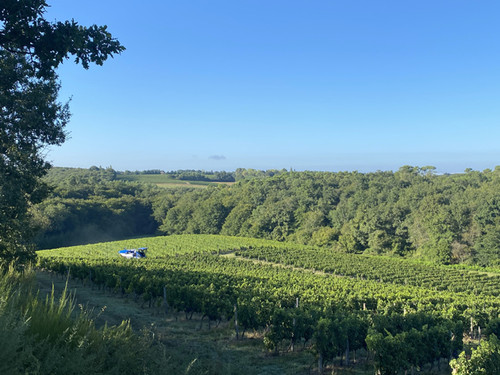Our Sauvignon Blanc harvest in pics
Posted by Gavin Quinney on 9th Sep 2020
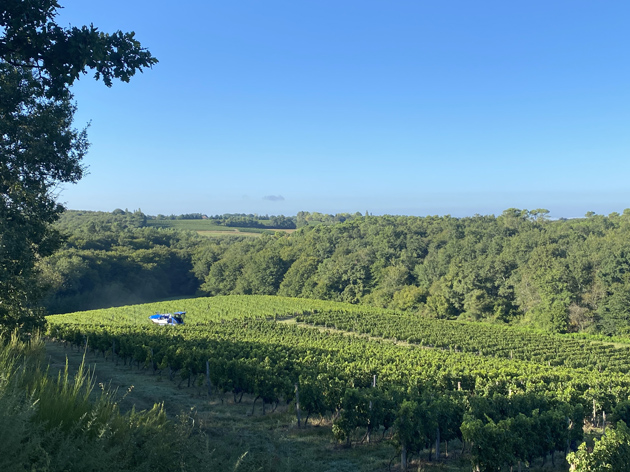
We finished our white harvest on Monday, 7 September, having kicked off on 25 August. Sauvignon Blanc is our most widely planted grape, which is handy because we sell more of this wine than any other.
Our much admired 2019 will run out quite soon so to bring in the harvest is a relief. Now we just have to make sure we don't make a mess of the fermenting juice.
We ourselves are drinking the 2019 Sauvignon-Sémillon, when we're not harvesting. Family hold back and all that but it's slightly cheaper and a thoroughly decent bottle. You could also try our Bordeaux Supérieur red 2017, and the two also come in a handy mixed red and white 6-pack in the UK.
All the best
Gavin & Angela Quinney
PS There’s a photo album of just the pics - click here.
The white harvest by hand
PS This is the second of our 2020 harvest updates in pics - the first, if you missed it, is here.
This was our 2020 Sauvignon Blanc harvest. There’s quite a long stream of images to scroll through and even this doesn’t tell the whole story. Once the grapes are in you can easily forget what happened, so it’s part blog – remember those? – and part aide-mémoire.
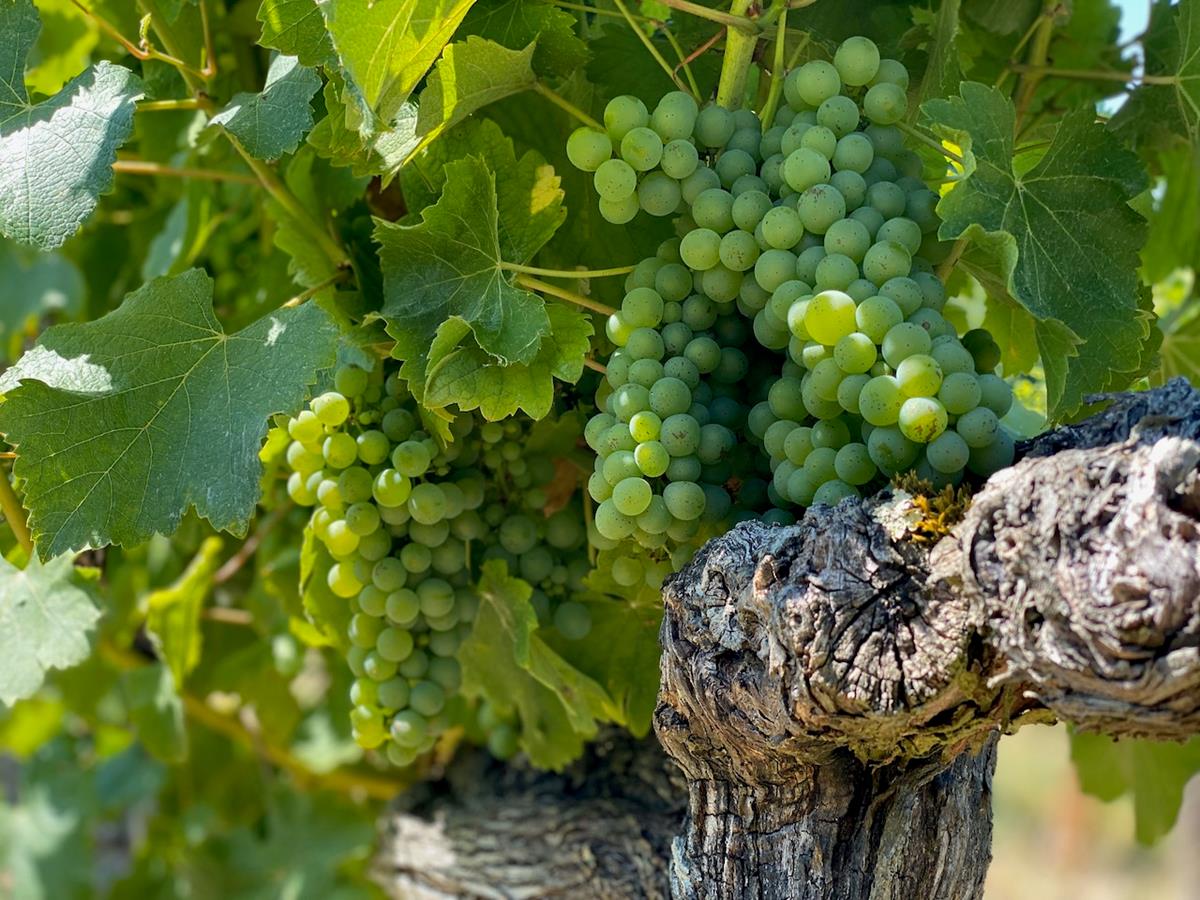
At the end of July, when the shot above was taken, the grapes were in good shape but there’d been no rain since 20 June. 2020 was an early growing season from the off – with most stages around two weeks ahead of the norm. We were having a gorgeous summer – but no rain.
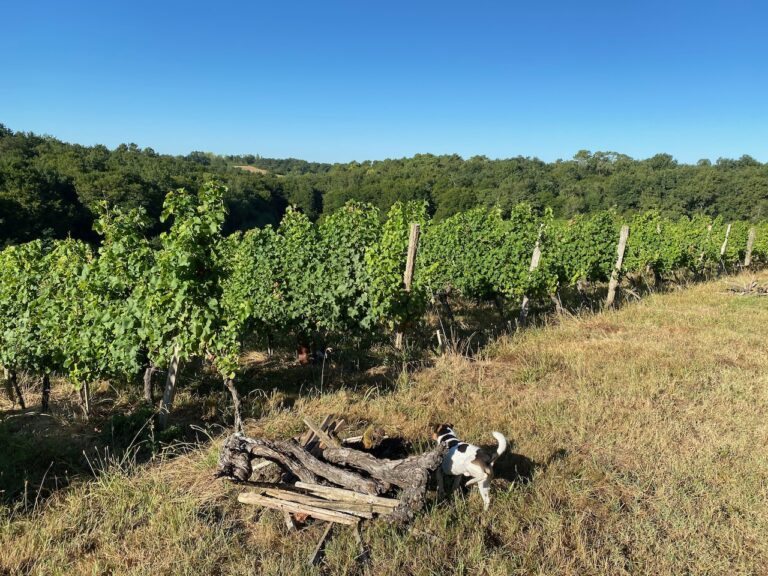
All our grapes are dry-grown, which sounds commendable but no irrigation is allowed for Bordeaux appellations. (In general, watering vines is not permitted in AOC/AOP France, which we still refer to as appellation contrôlée, but you can water vines for Vins de France or IGP – the old Vins de Pays – and both have much higher yields.) Here’s Pavie on 4 August and some old Sauvignon. Years of loyal service and that’s what they get.
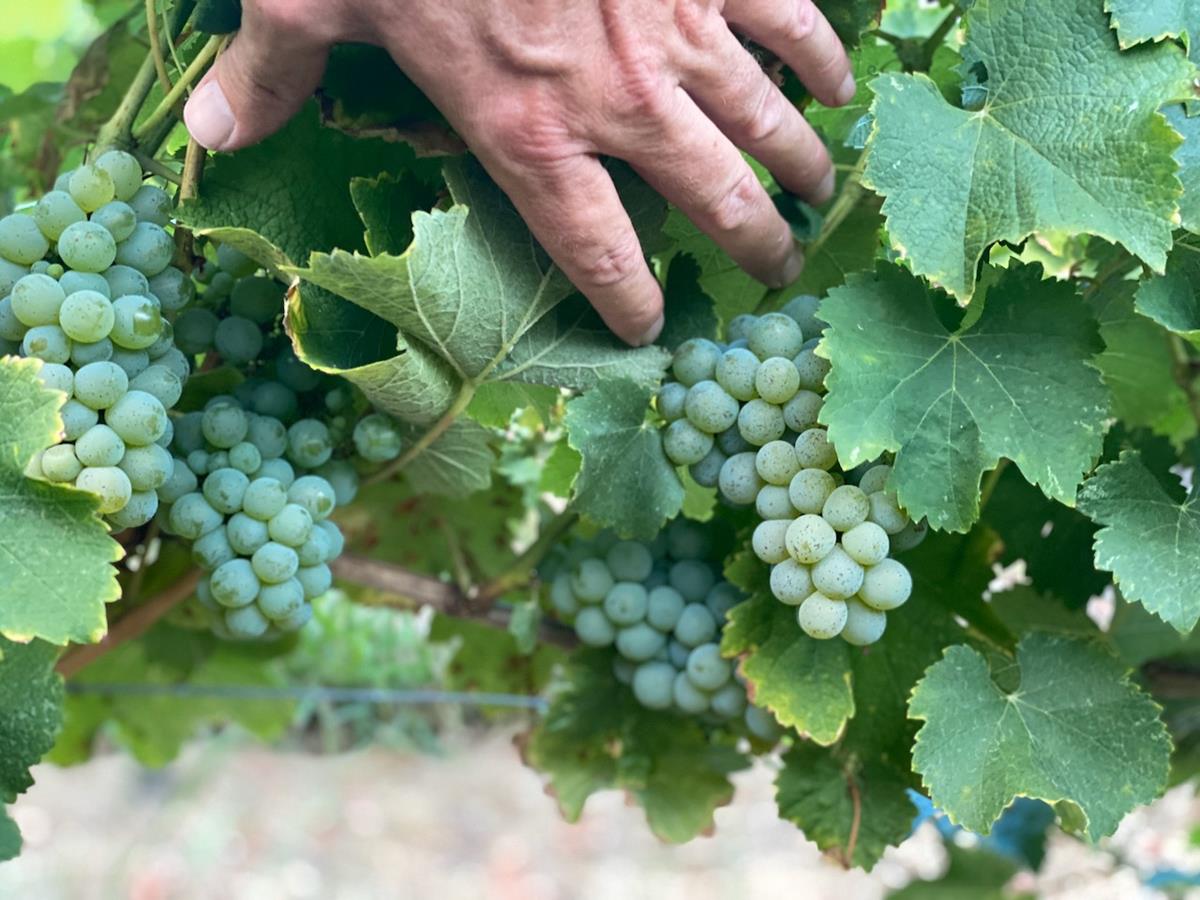
This was 9 August. With the drought – there were to be 53 days without any rain at all – the grapes were being held back from fully ripening.
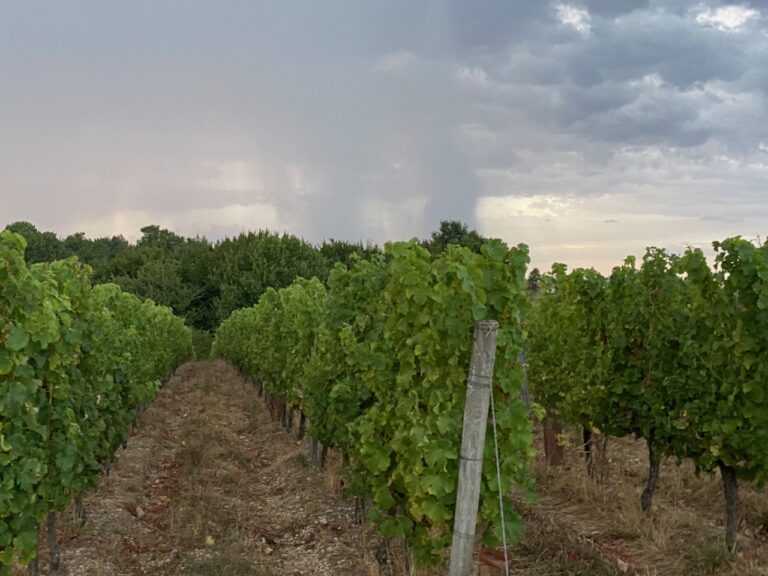
The evening of 11 August saw the first of our welcome mid-August storms. Welcome for us that is, and our Sauvignon Blanc on the dry ground pictured, but not so for a few unfortunate growers. In the distance, that’s a hailstorm some 10 kms away, over Saint-Germain du Puch. Devastating at this stage, I’m afraid. That’s another story.
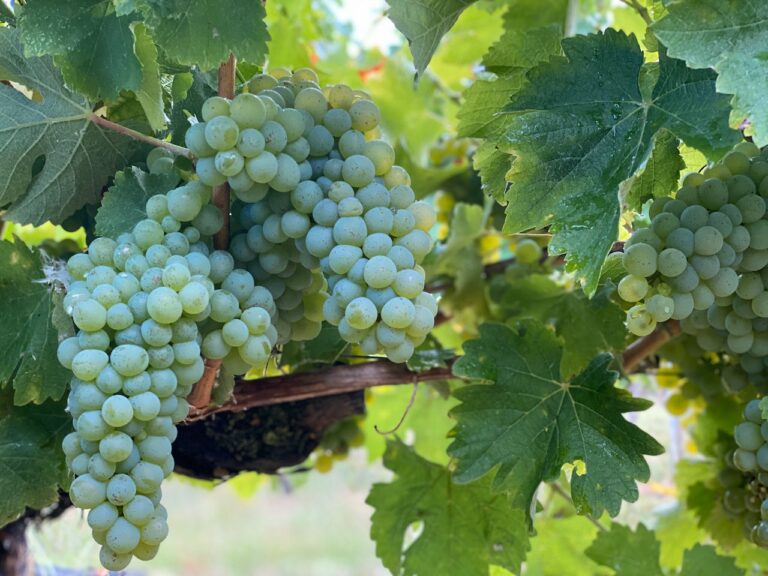
All the grape varieties benefitted from the three storms we had, none more so than our Sauvignon. This was 13 August, and the best thunderstorm of the lot – the heavy rain overnight on 15-16 – was weirdly localised. Nelly, our assistant winemaker, had no rain for her garden just a few miles down the road. She thought we’d put extra water in our rain-o-meter here as a joke.
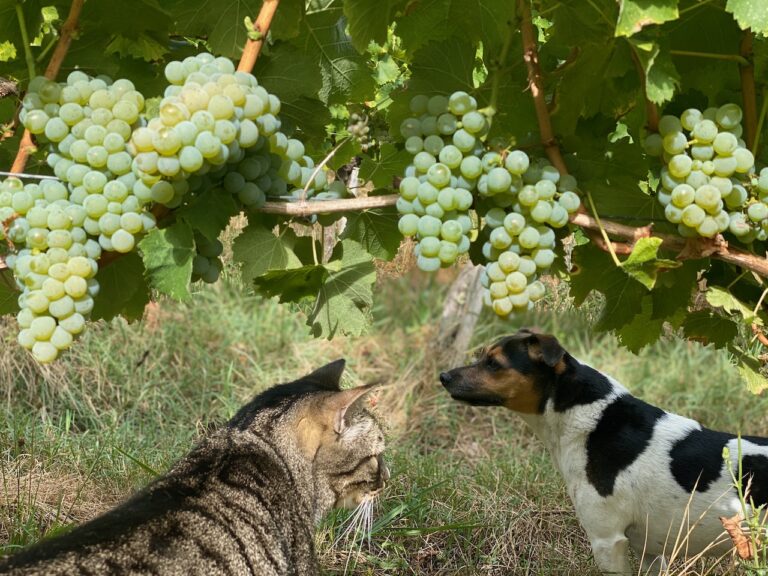
Goose and Pavie are both happy with the progress, 22 August. You can really taste (and see) the difference in the space of 10 days. The thing with Sauvignon Blanc is just how packed in the grapes appear in the bunches. They seem like they might burst if they get any juicier, but they don’t.
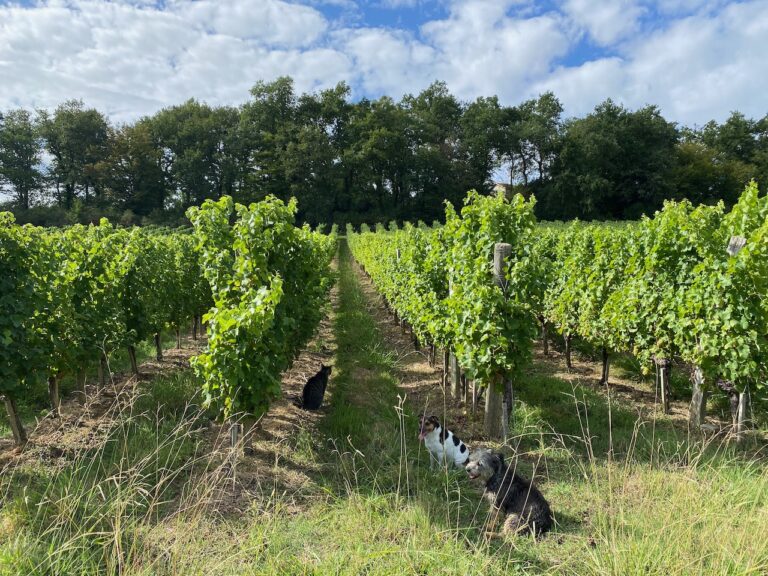
Out tasting grapes with the three musketeers, 22 August.
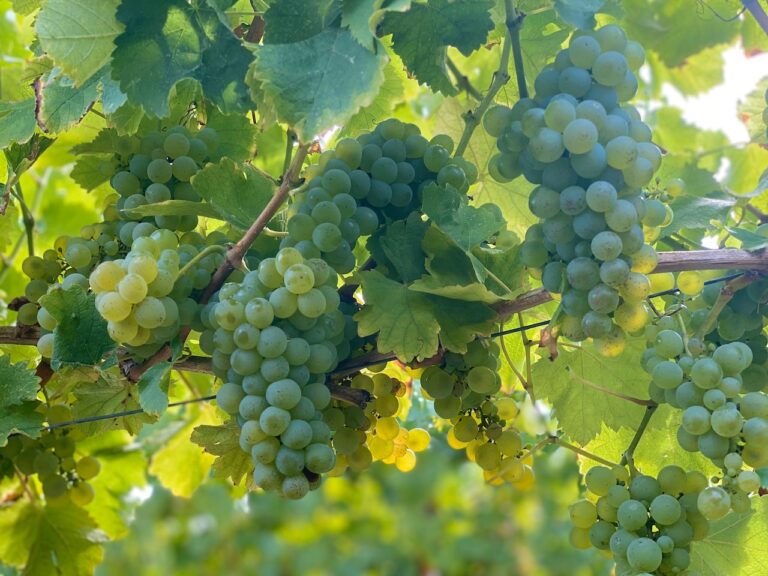
Bunches on young Sauvignon vines ripening up nicely.
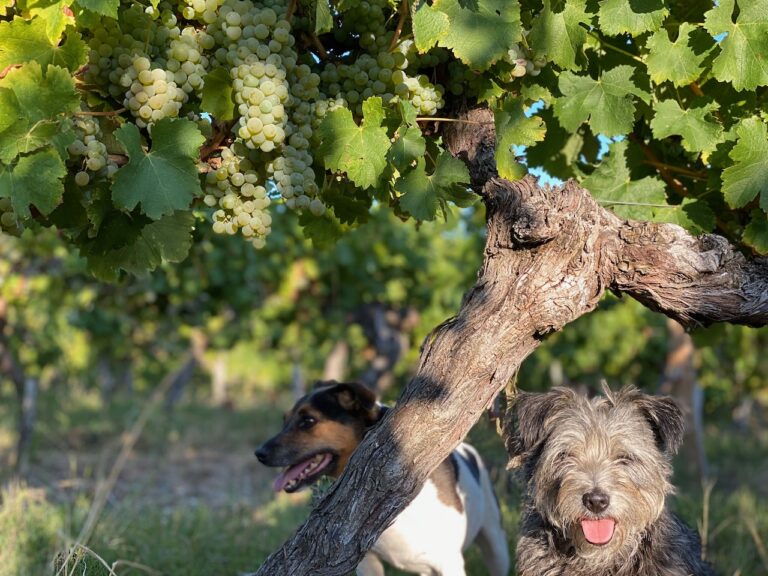
As they are on the older vines.
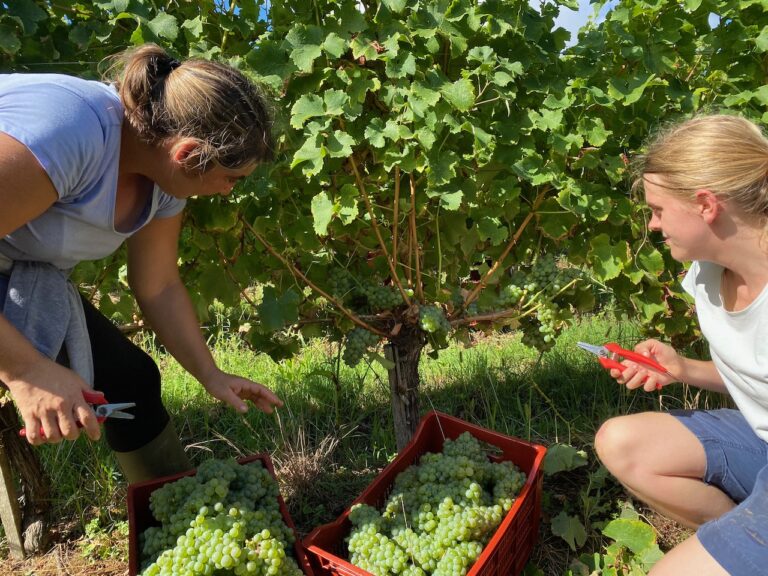
The first Sauvignon Blanc to be picked was by hand, for the Crémant – our sparkling – on 26 August. We were looking for less than fully ripe grapes to add some racy acidity to the Sémillon.
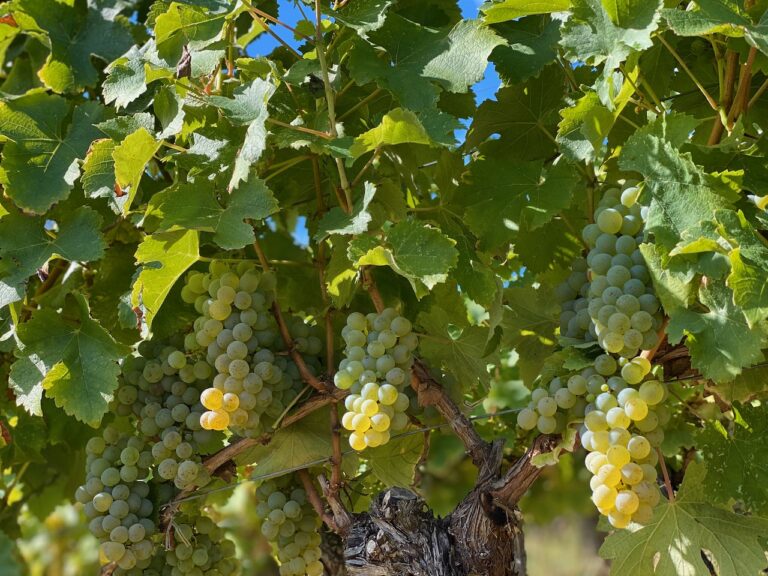
As good a job as Sandra, Sophie and the 30-strong team did, we’d need an army to bring all the Sauvignon in by hand. Once it’s ready, you can’t hang about, even if the grapes in different blocks ripen a day or two apart (thankfully).
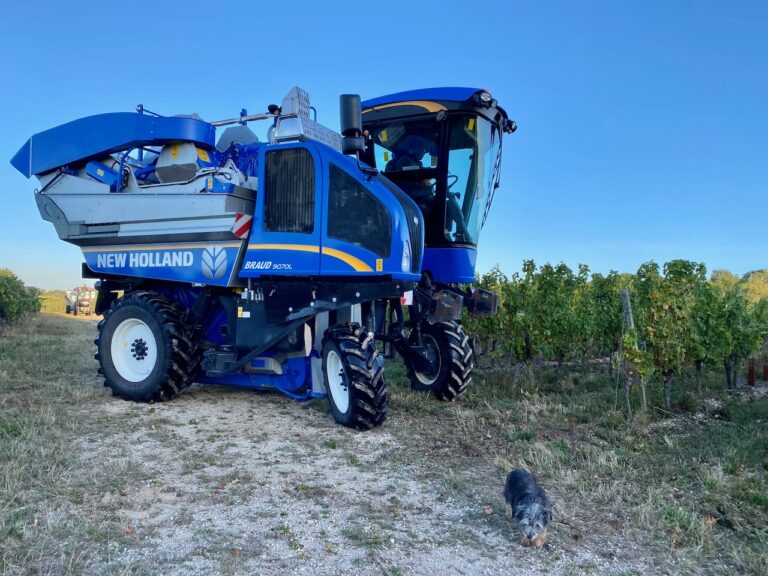
We kicked off the first parcel by machine on Thursday 27 August. I think that’s our earliest vintage yet, though 2003 and 2011 must have run it close.
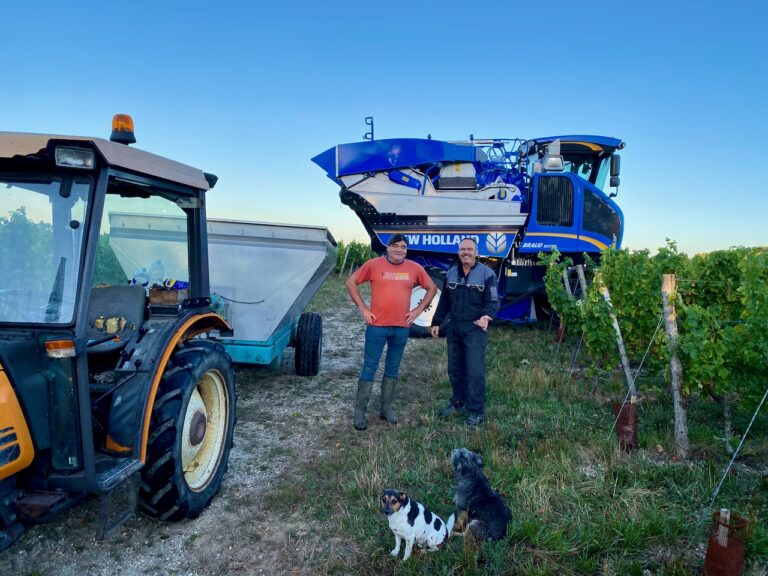
We’ve worked with Guy, on the right, for 15 years. He and Daniel, our vineyard manager, are both from the Charente – Cognac country – so they’re thick as thieves. Guy has 60 hectares (150 acres) of white grapes up there for making cognac, and he brings the machines down to us as he harvests at a slightly different time.
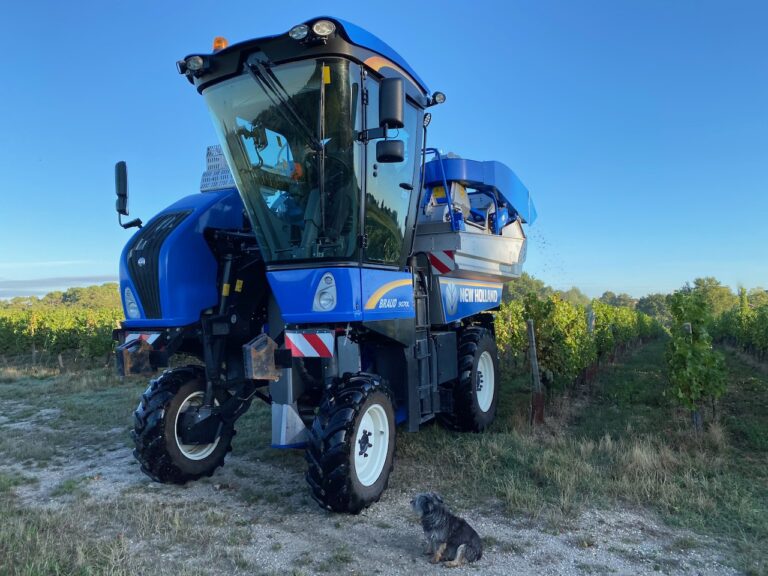
Yours for €225,000 plus VAT, after discount, in case you’re wondering why we hire them. Guy has two machines and five drivers (one was added this year in case anyone gets ill, though, to be fair, this is one job where social distancing isn’t too hard).
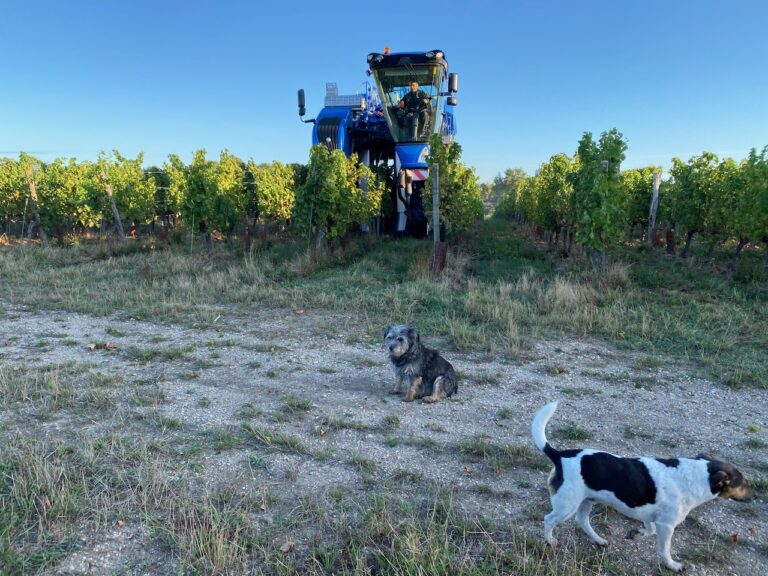
Note the gravelly soil – that’s one reason it’s the first block to ripen. As you can see, Margaux has a worrying tendency to be completely unperturbed by the machine’s proximity. Visitors to Bauduc will have noticed this with their cars. Pavie always runs a mile.
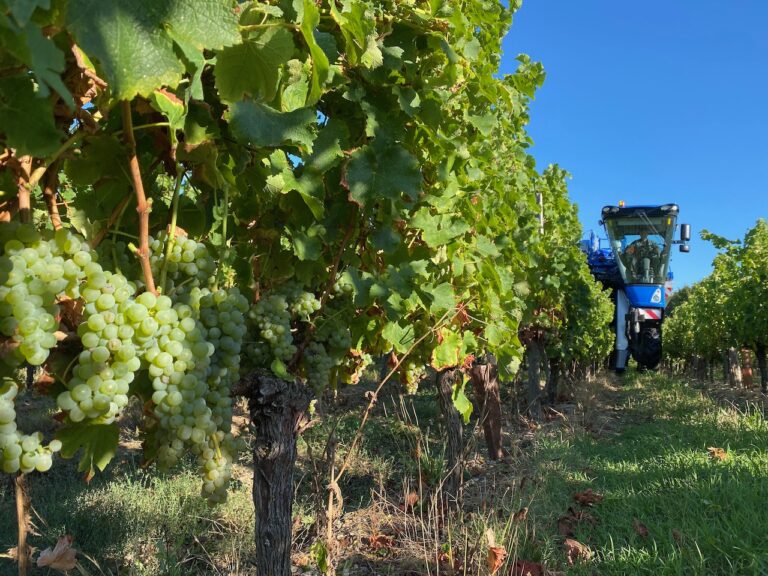
The harvesting machine is ruthlessly efficient. It vibrates the row of vines as it goes (at a fast walking pace), knocking the grapes off the stems.
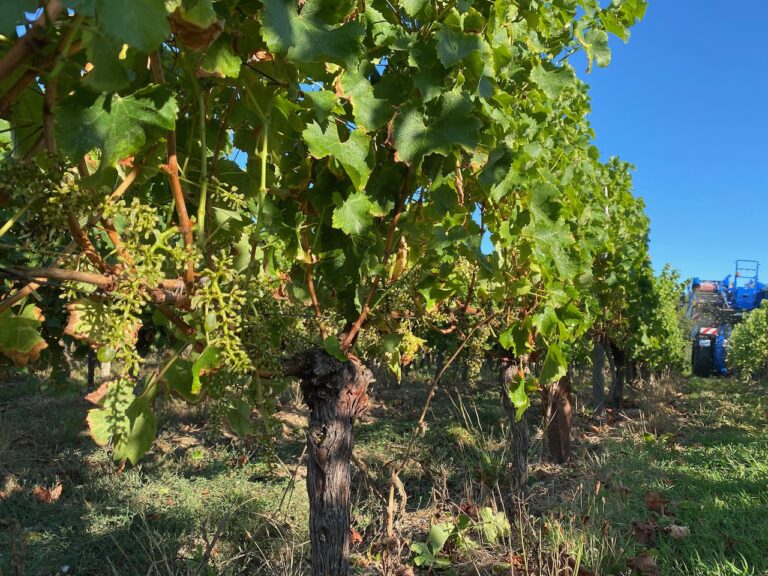
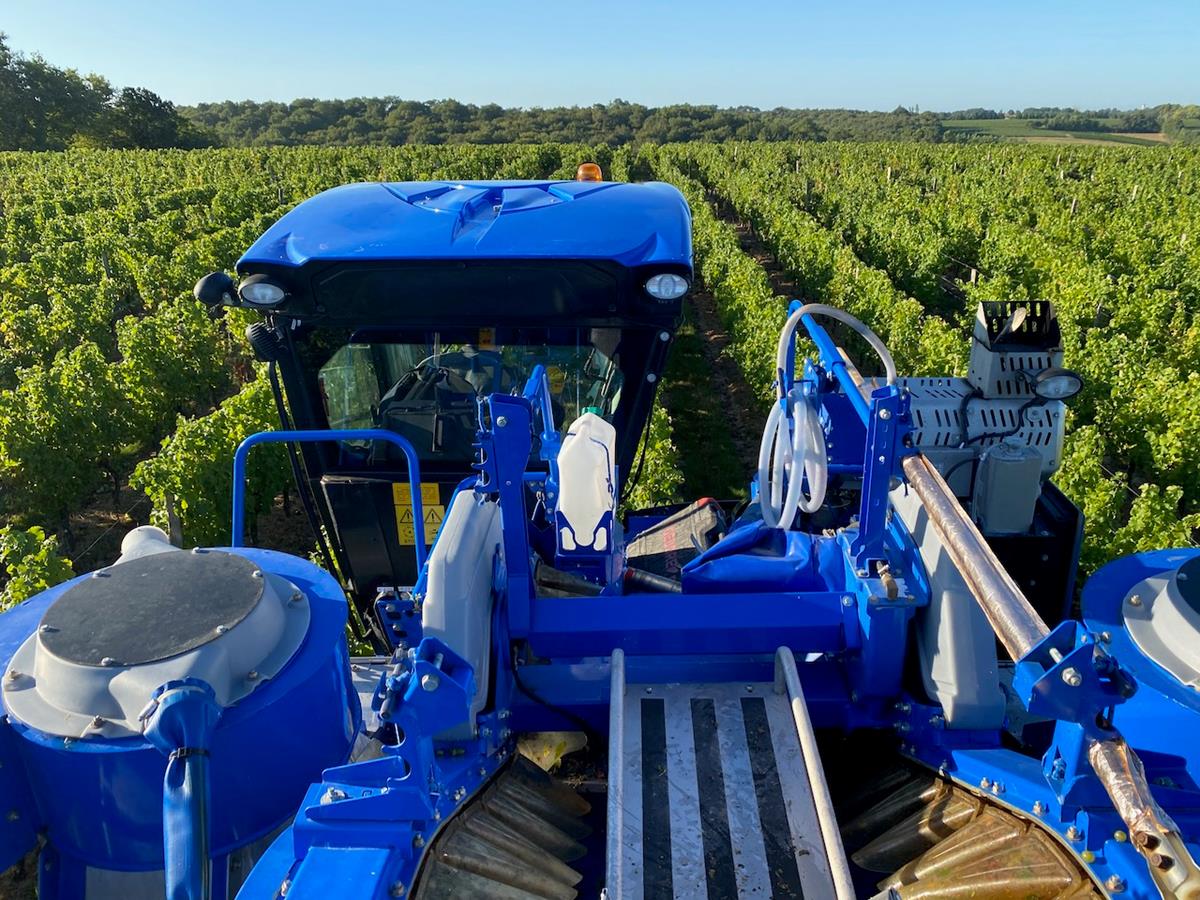
This is not a safe or quiet place to be but a thoroughly invigorating and informative one on a fine harvest morning.
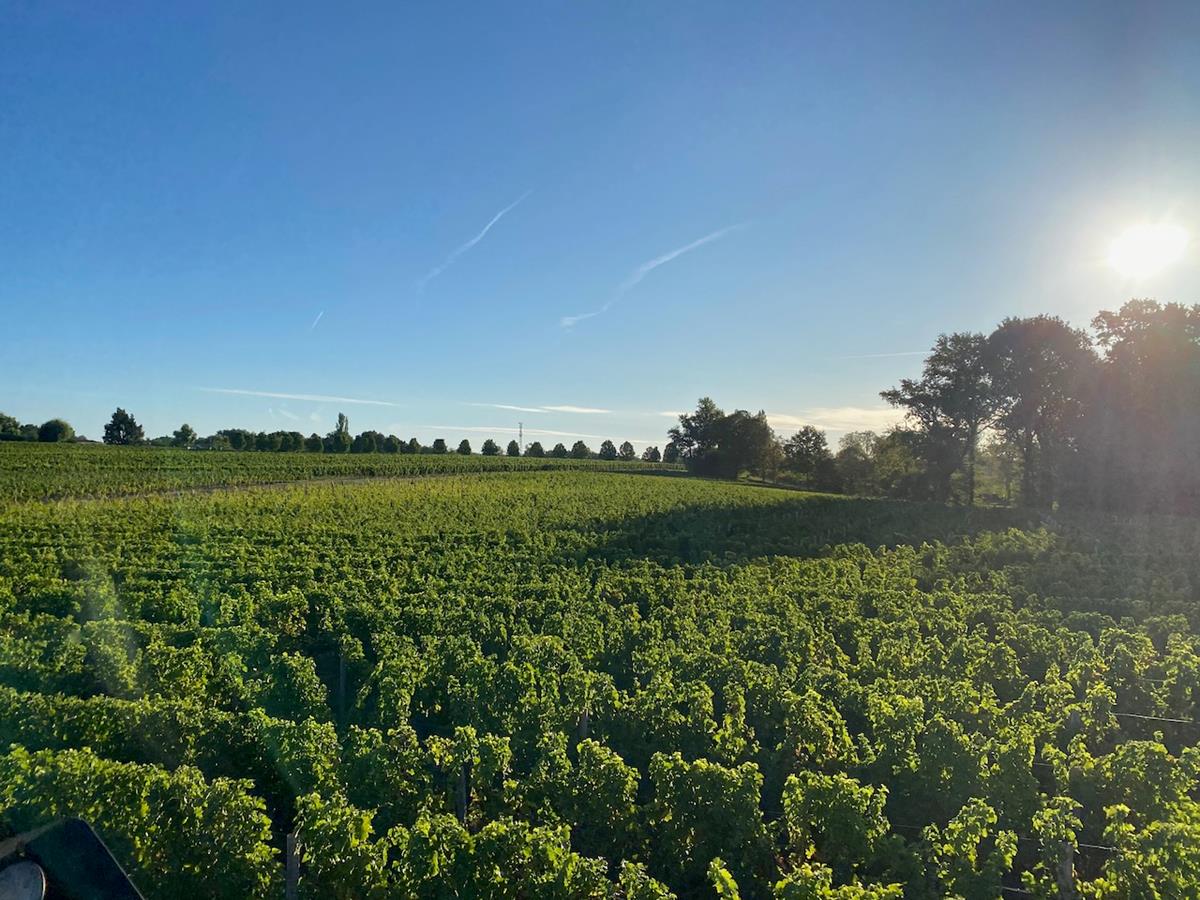
The first block we harvest is called Dagueneau, after Didier Dagueneau who made wonderful Sauvignon Blanc at his domaine in Pouilly-Fumé in the Loire. I went, years ago. We planted this parcel in 2004, and our first crop in September 2008 was the day on which Dagueneau was sadly killed in a microlight flying accident. So we renamed it in his honour.
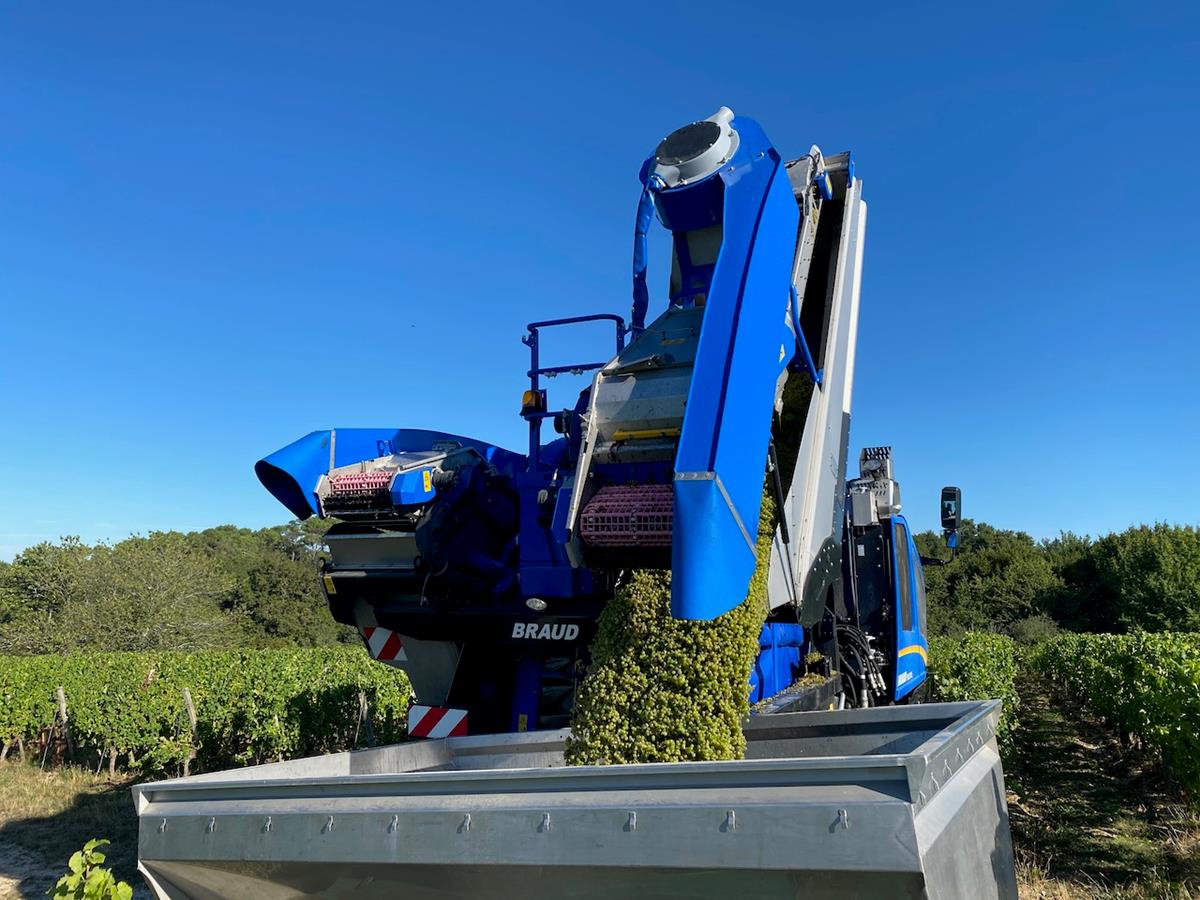
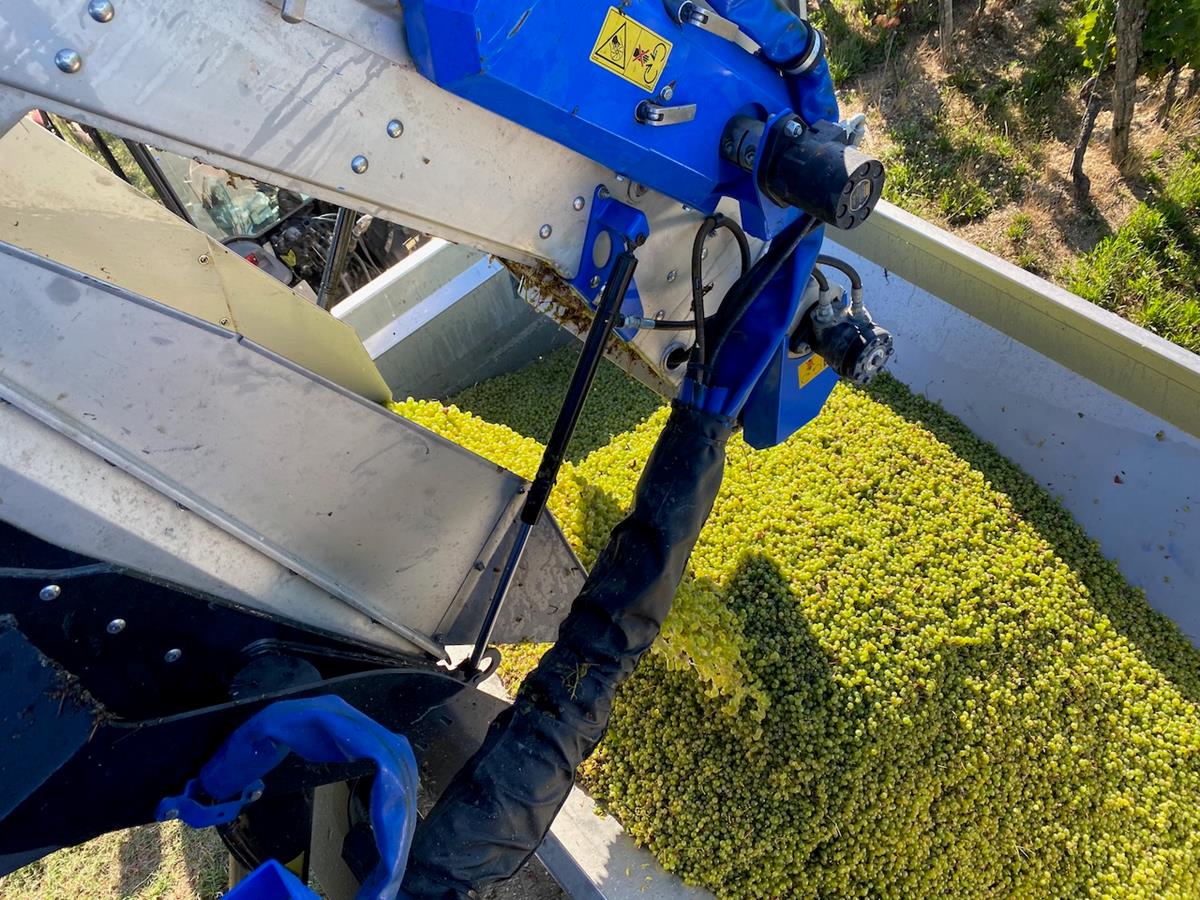
The Braud 9070 has an onboard de-stemmer and sorter, so you just end up with the grapes and no crap, like leaves or whatever.
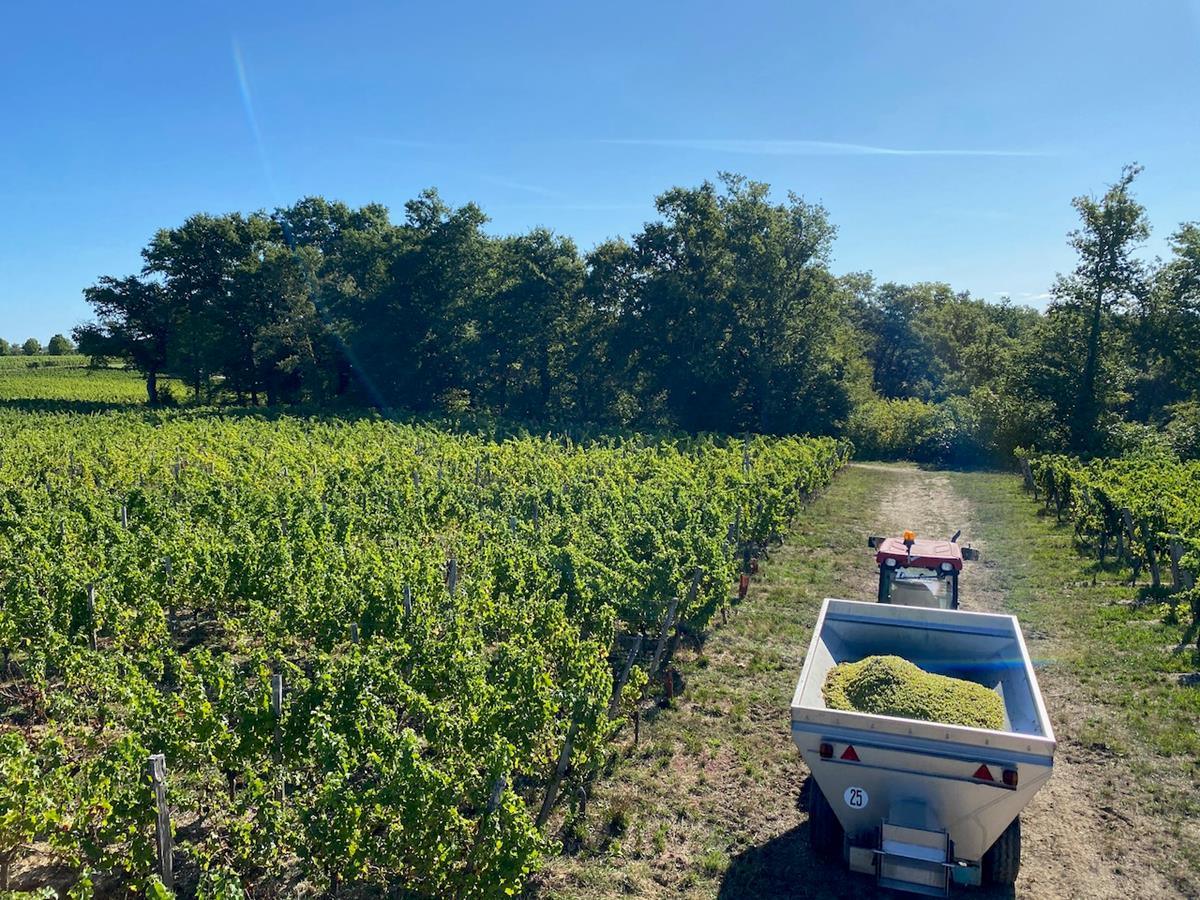
There’s never any waiting around here for a second load as Daniel whisks the trailer off to the winery. The grapes would oxidise all too quickly.
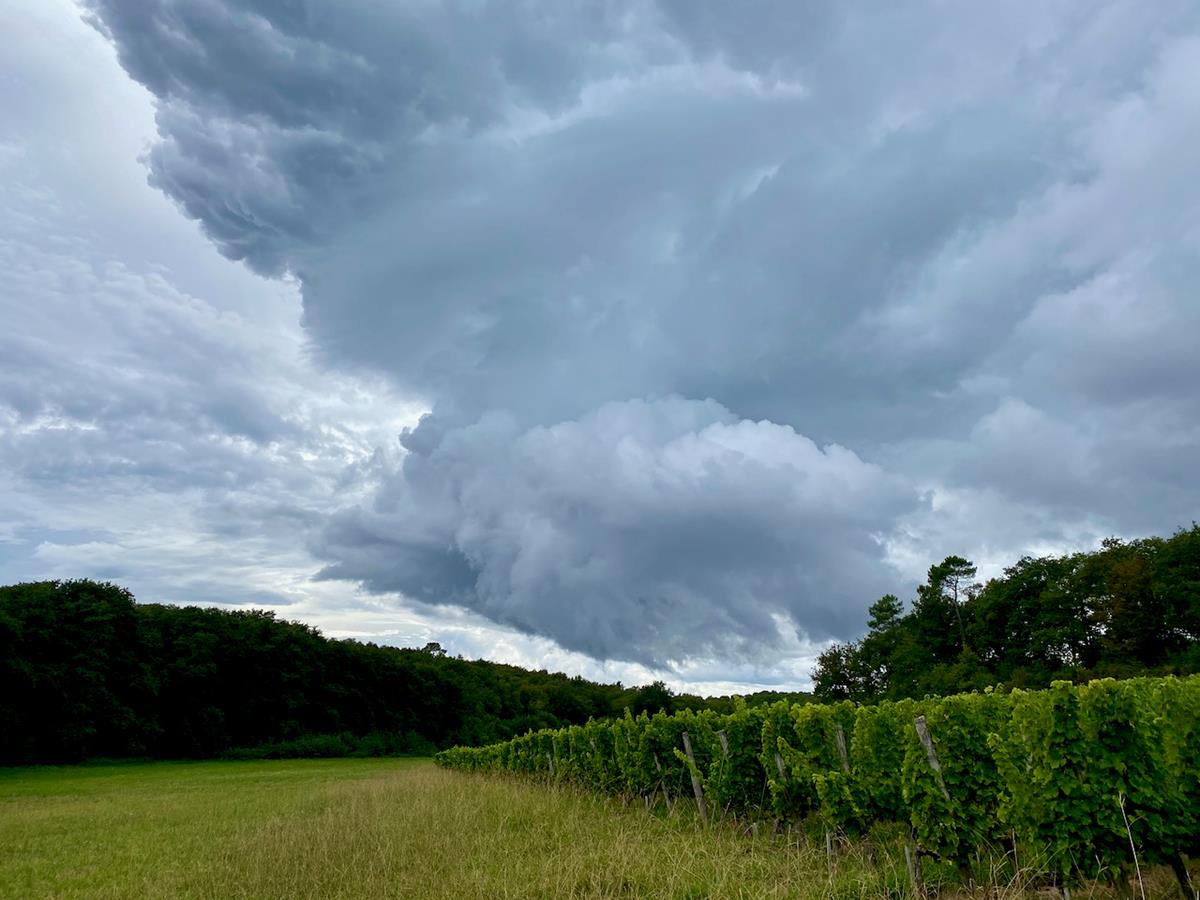
We didn’t harvest on Saturday 29 August and it was a rainy, humid day.
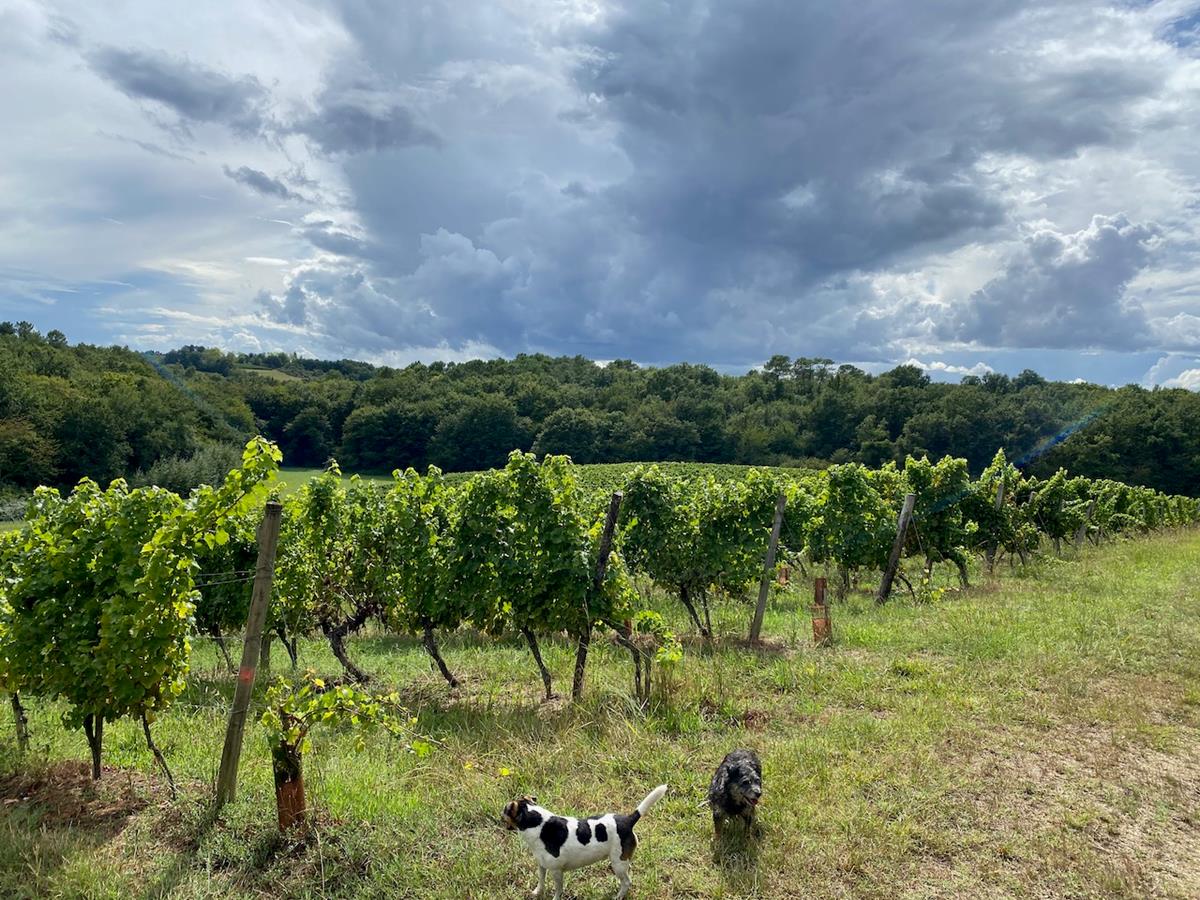
Damp and humid at this stage is worrying because having got the grapes to pitch perfect, we have to stagger the harvest. What we really don’t want is mould or rot (botrytis) to kick in.
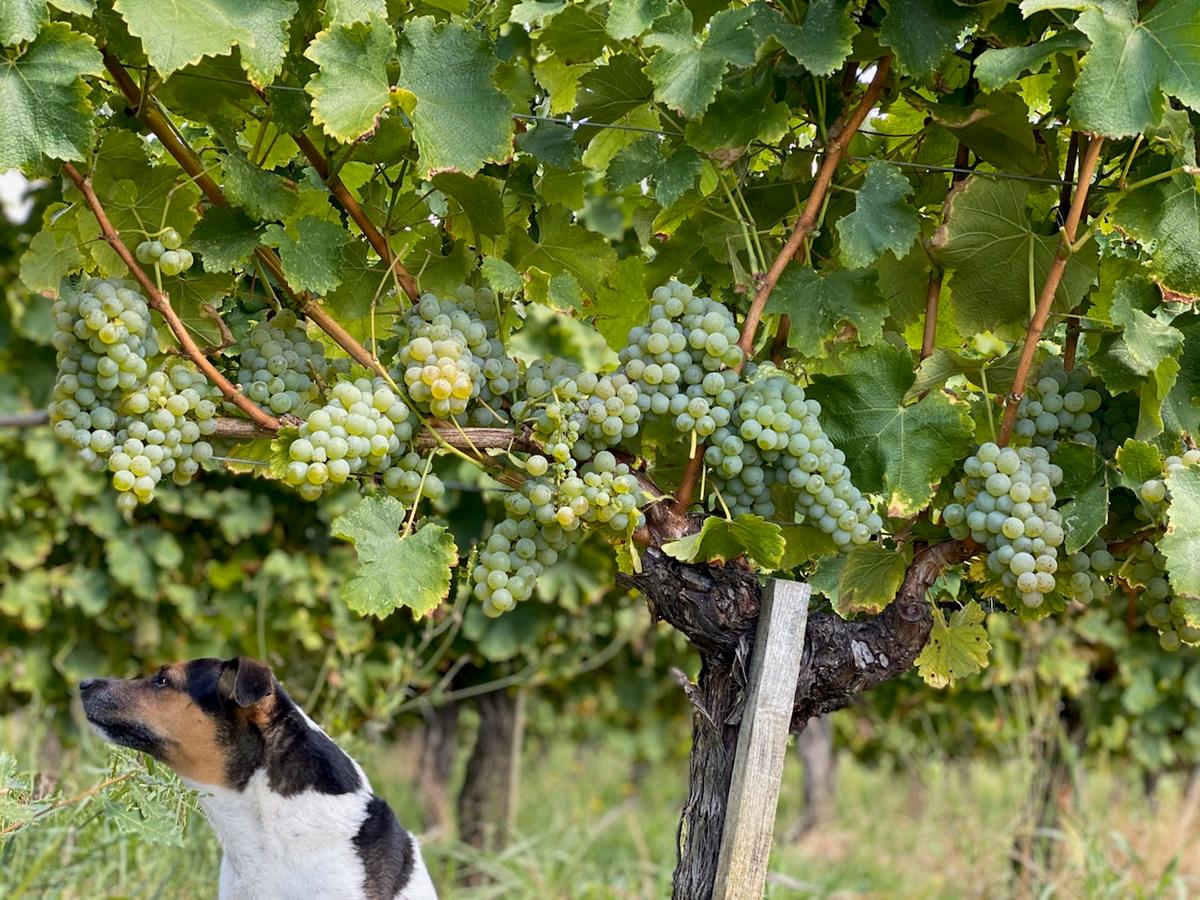
The Sunday though is happily dry and sunny with a welcome breeze. The mould I thought could take hold on the vines with packets of bunches – it can be like sticking an overripe banana in a bowl of peaches – didn’t happen.
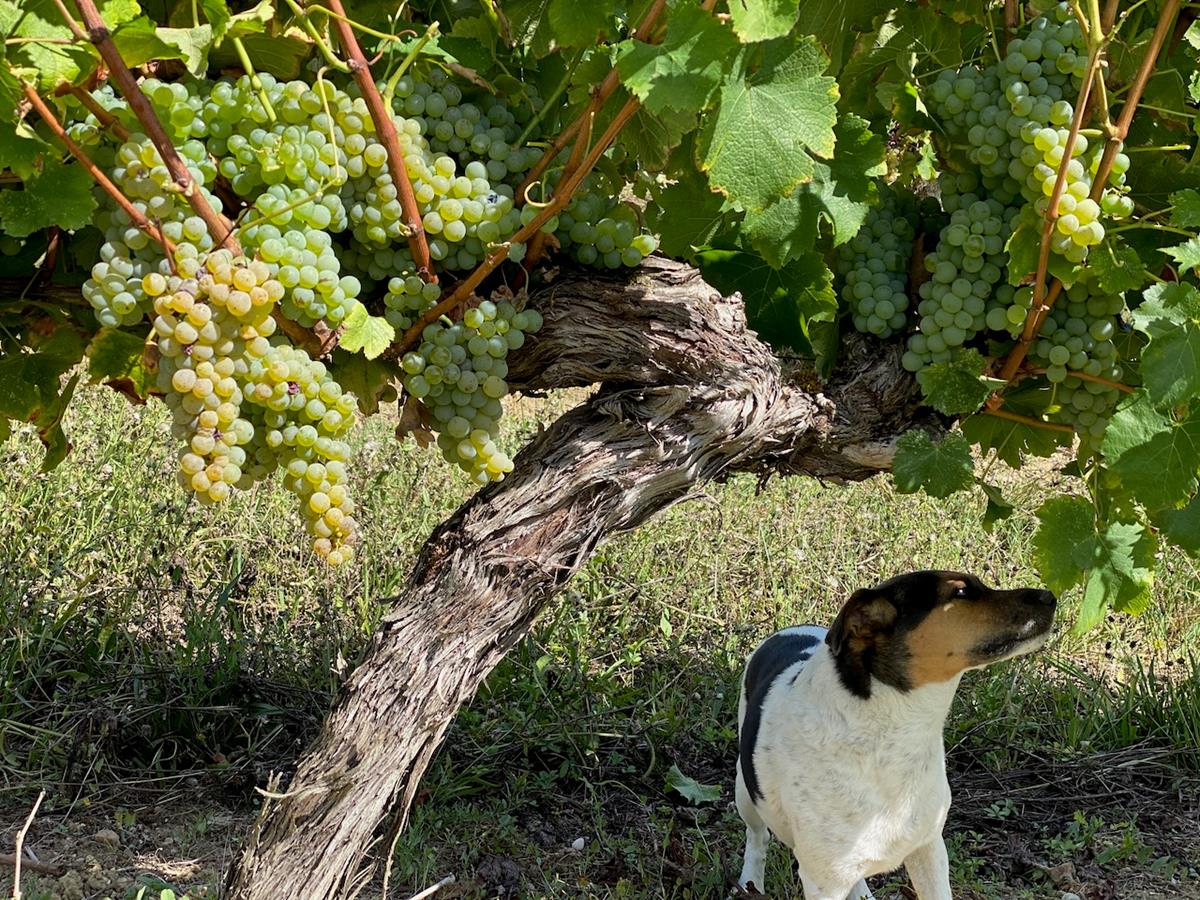
All clear for both the younger vines and the older ones. On the Monday, I brought in Sandra and her mate to check all the more vulnerable rows and cut off anything untoward.
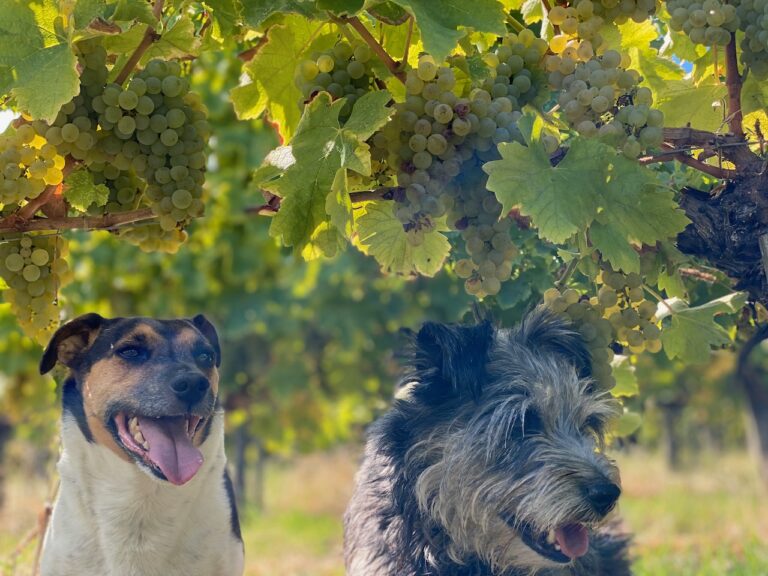
But we’re pretty happy with it.
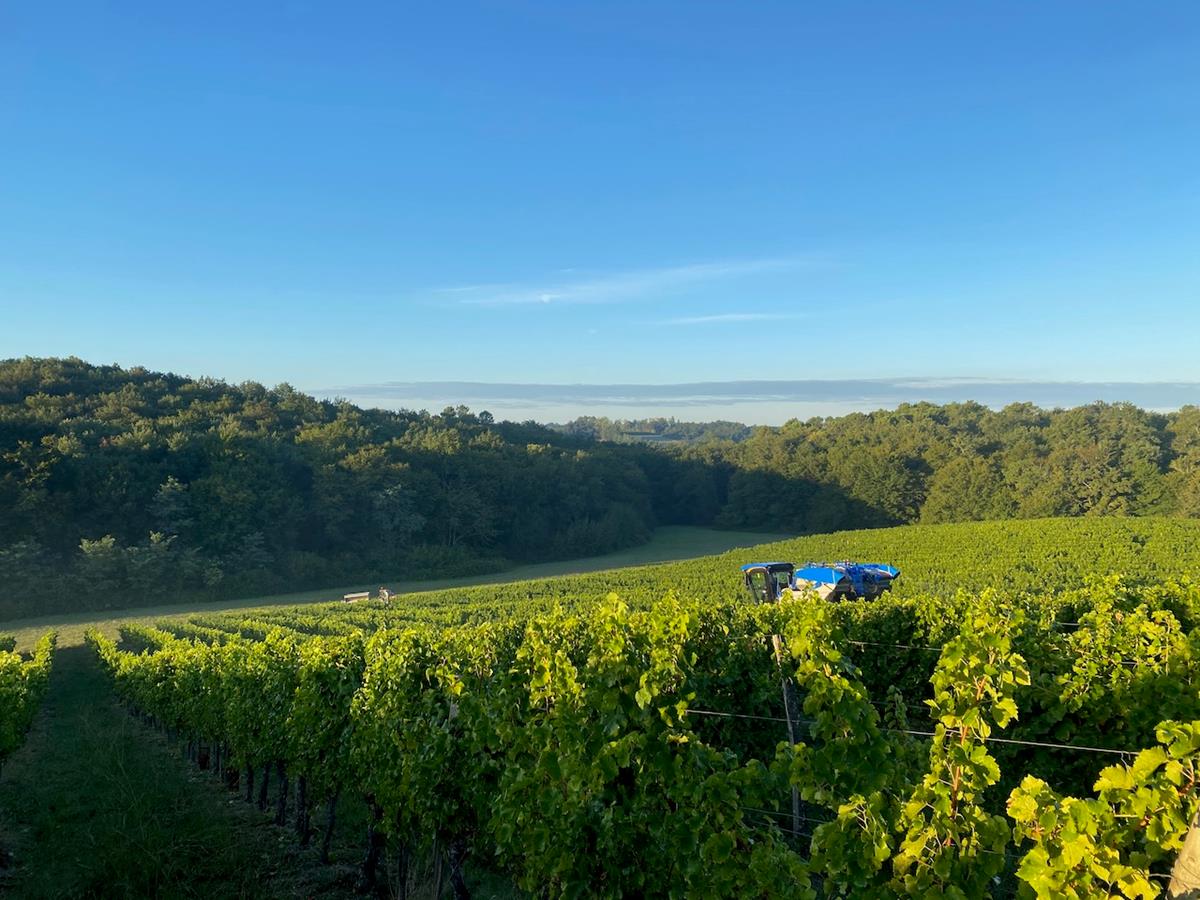
Monday 31 August and it’s the large parcel of older Sauvignon Blanc which we call Montuard. (It’s the place name, or lieu-dit.)
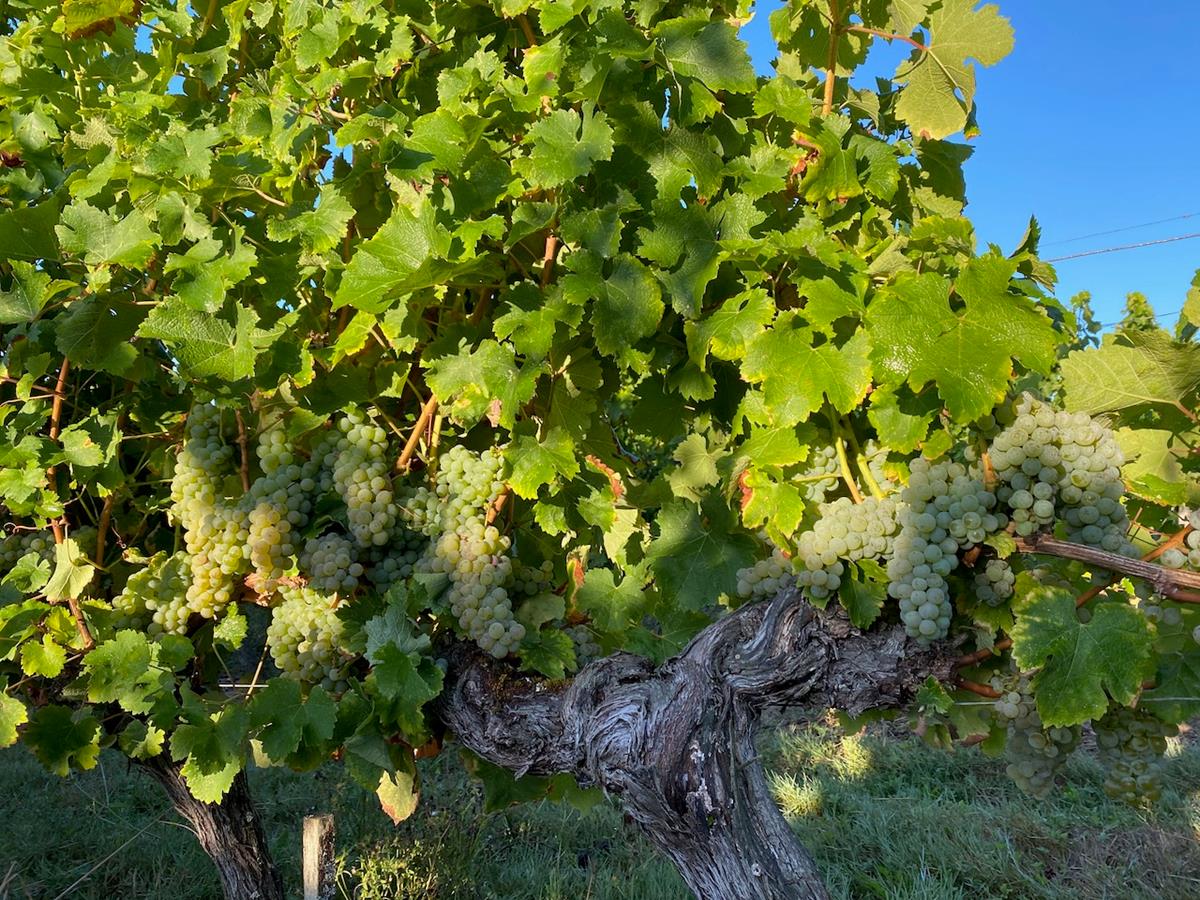
They say older vines have lower yields. I’m not always convinced by that. I’ve pulled the leaves away to see what’s underneath – as with just about all these pics, by the way. We like to keep Sauvignon bunches inside their leafy canopy.
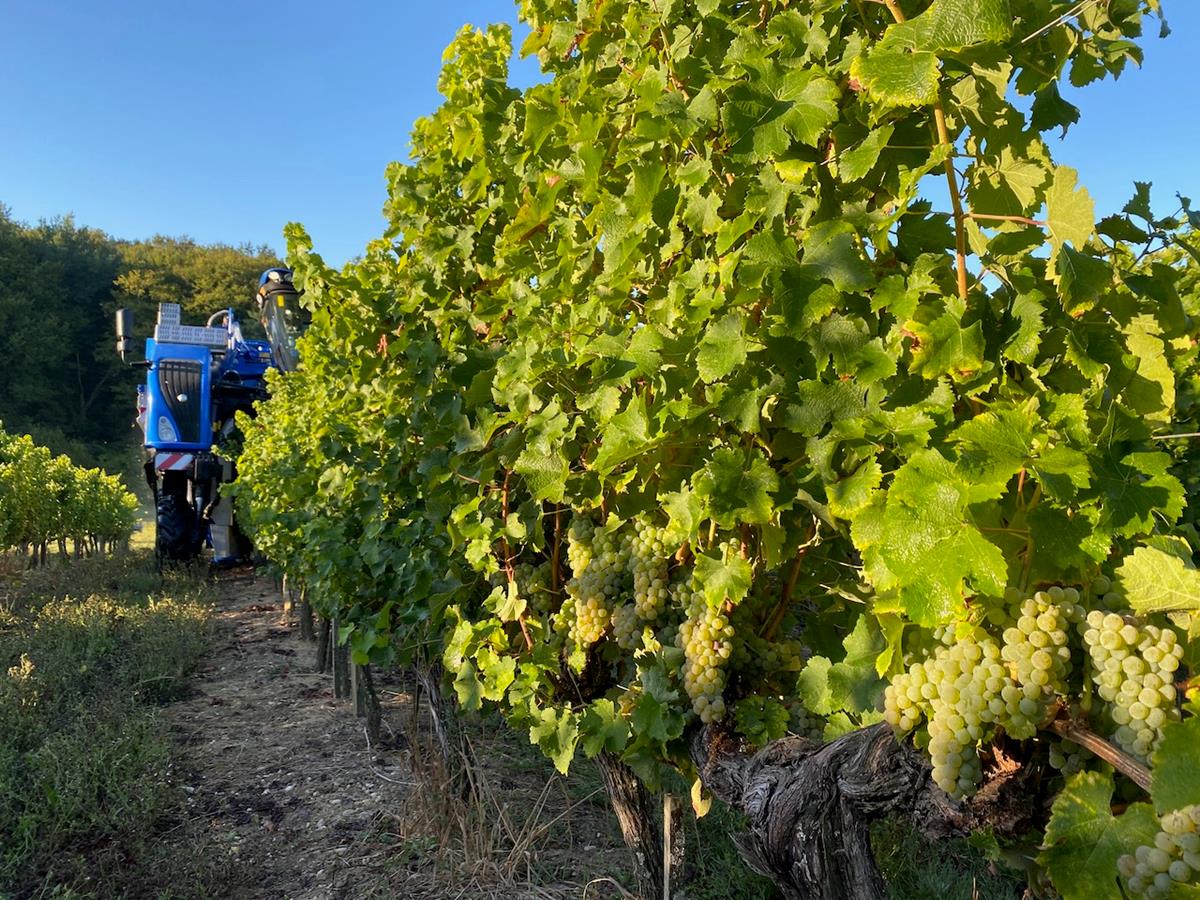
We set the machine to a gentle vibration to minimise the risk of upsetting these older vines.
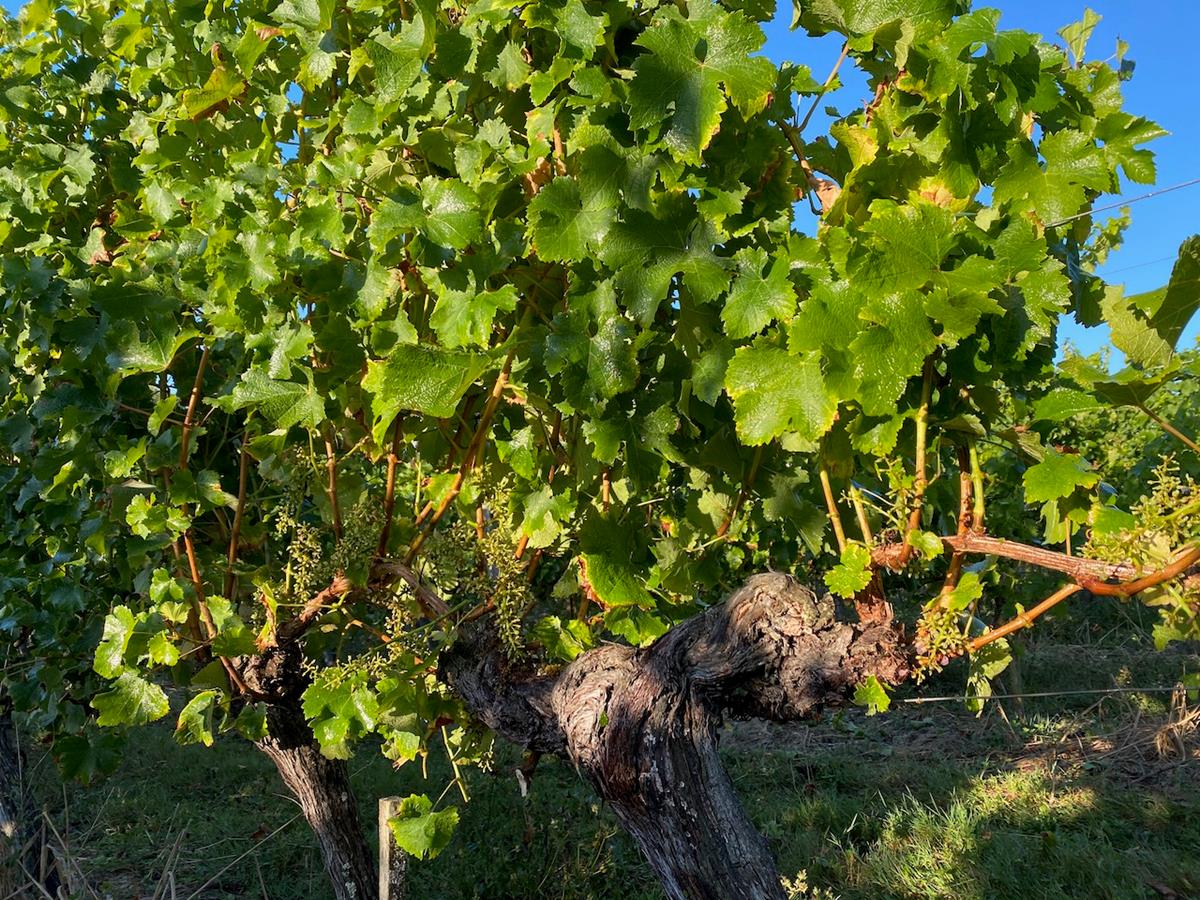
Hardly a grape left on the vine.
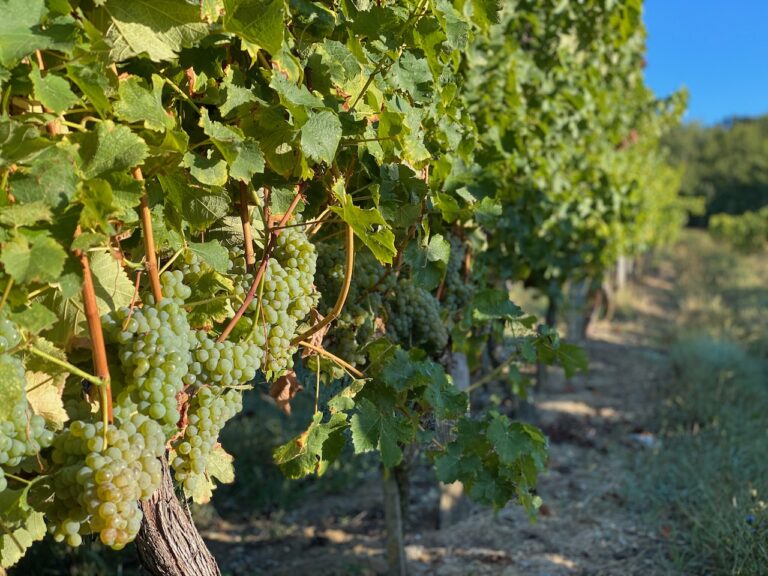
No French vineyard story should be without a mention of the terroir...
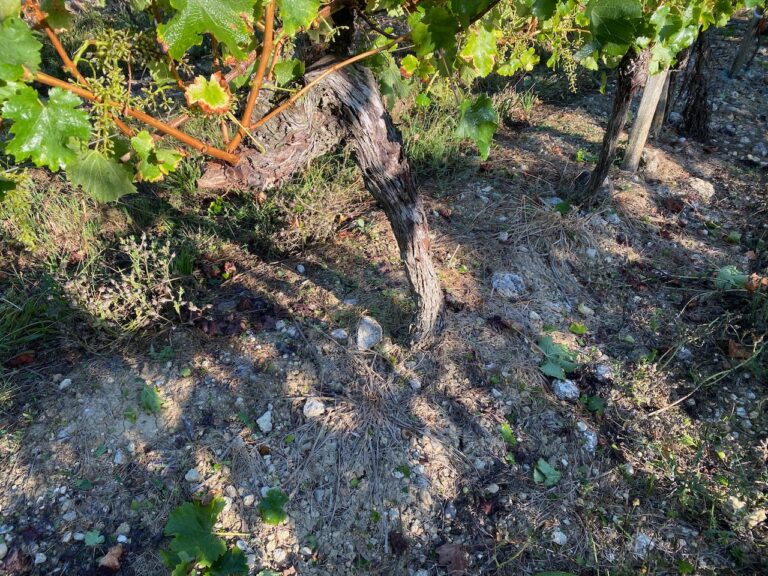
The soil is quite different to the gravelly block above – this has a limestone ridge running through it, with light clay over the top of it, mixed in with crumbly chunks of limestone.
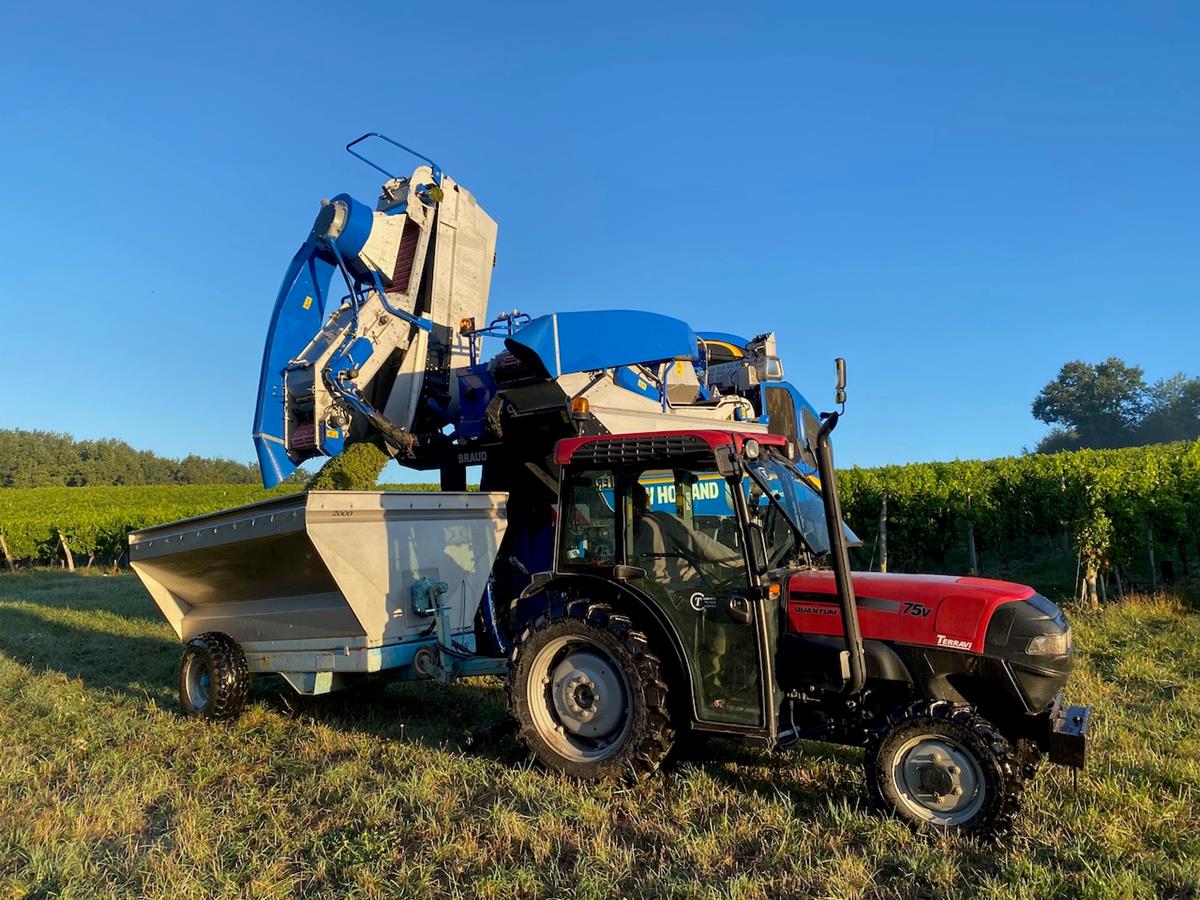
Aside from the right sort of terrain, you need a few trailers and tractors.
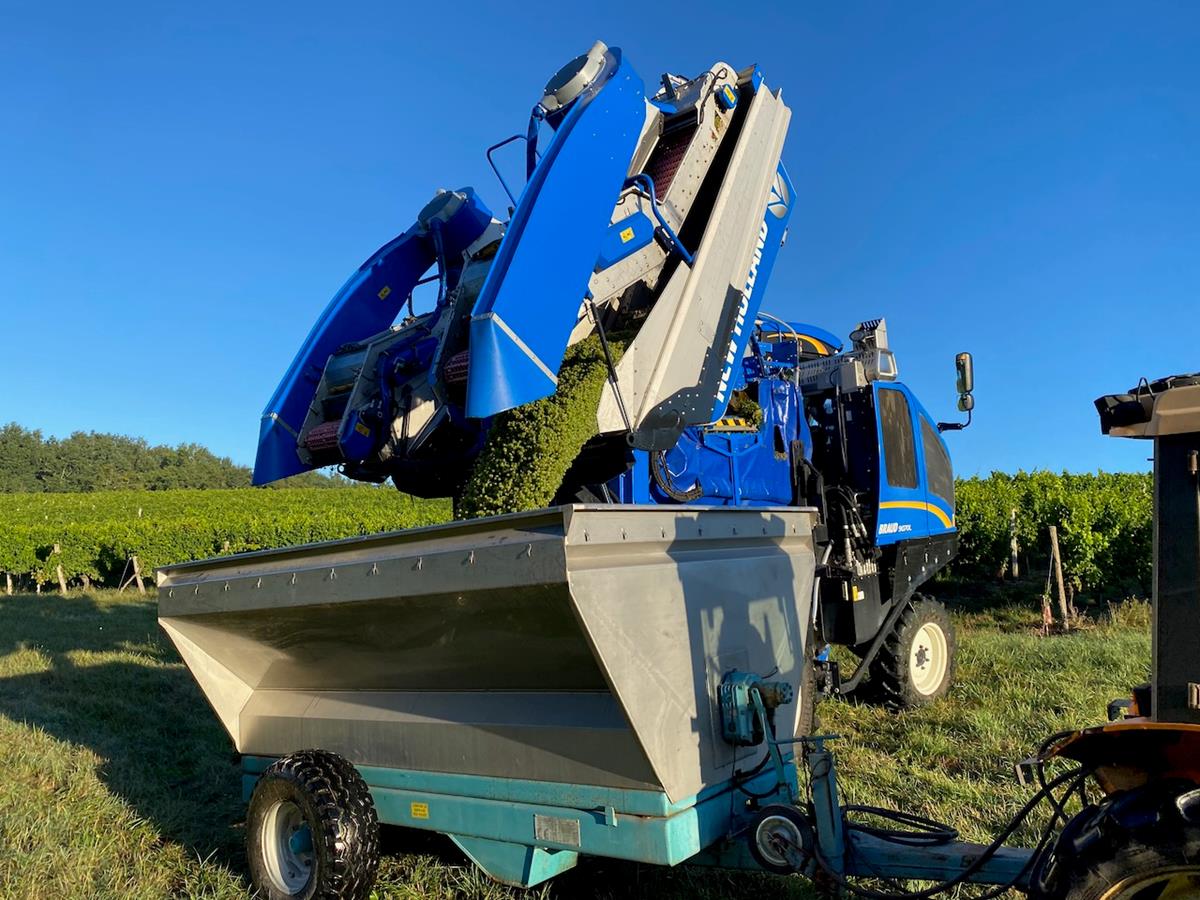
It’s a bright, chilly start to the week – about 10ºC first thing. Ideal for bringing in the grapes before the sun warms them up.
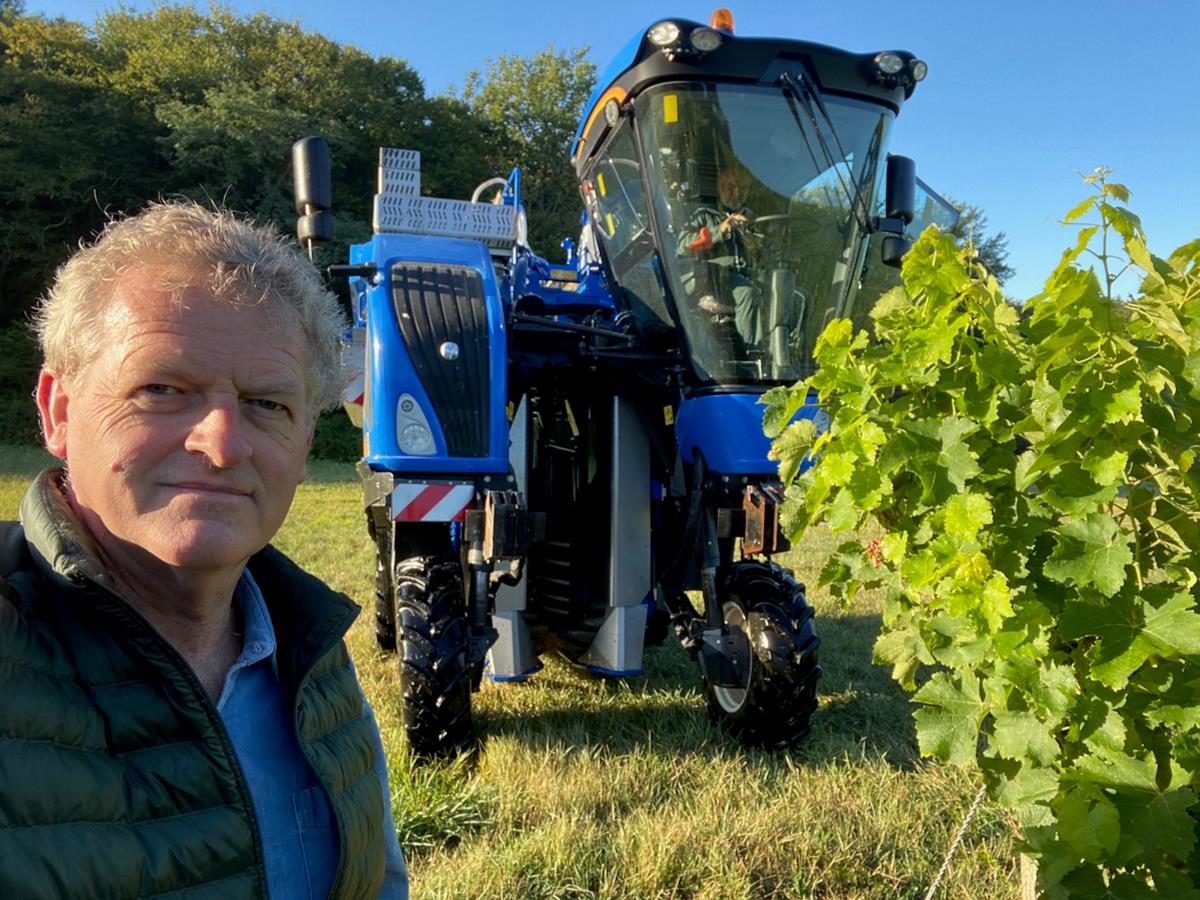
We’ve harvested this parcel with a machine since 2005. For our first five full vintages here, 2000-2004, everything was picked by hand. In 2005 we ran with both machines and by hand. We preferred the machine harvested Sauvignon, especially the grapes harvested in the cool of the morning.
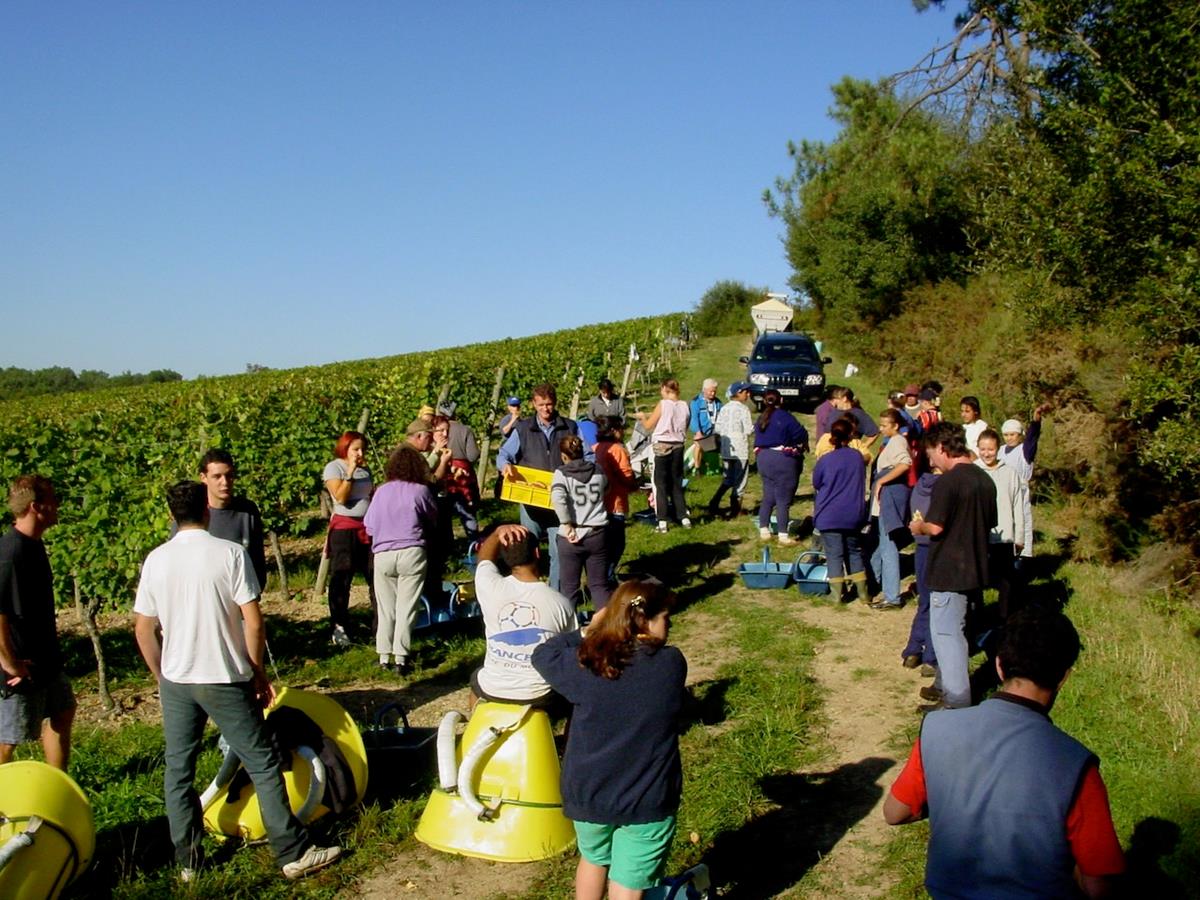
This was 23 September 2002, and the same block of Sauvignon Blanc vines. That’s me handing out the chocolatines again, though what’s more interesting – ignoring social distancing issues, for the moment – is that the 2002 harvest, a late one, was 8-10 days behind the average, whereas 2020 is two weeks ahead.
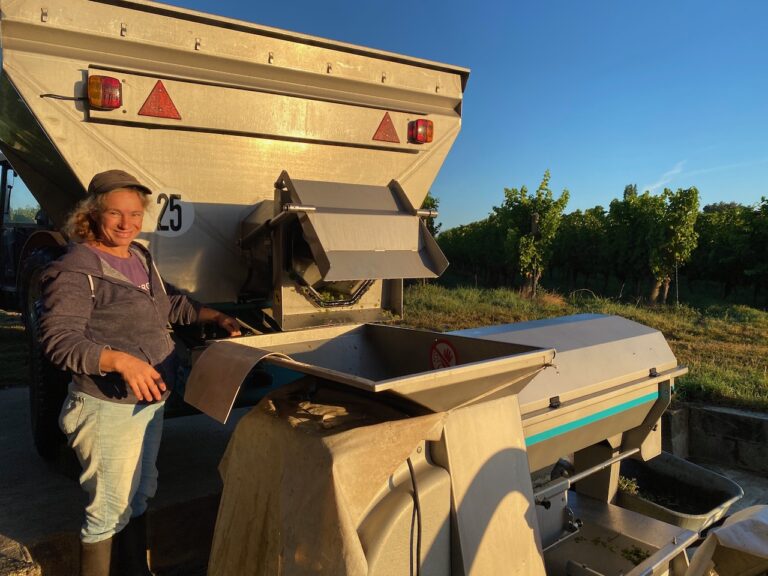
Nelly looked after the grapes coming into the winery back then, just as she did on this Monday.
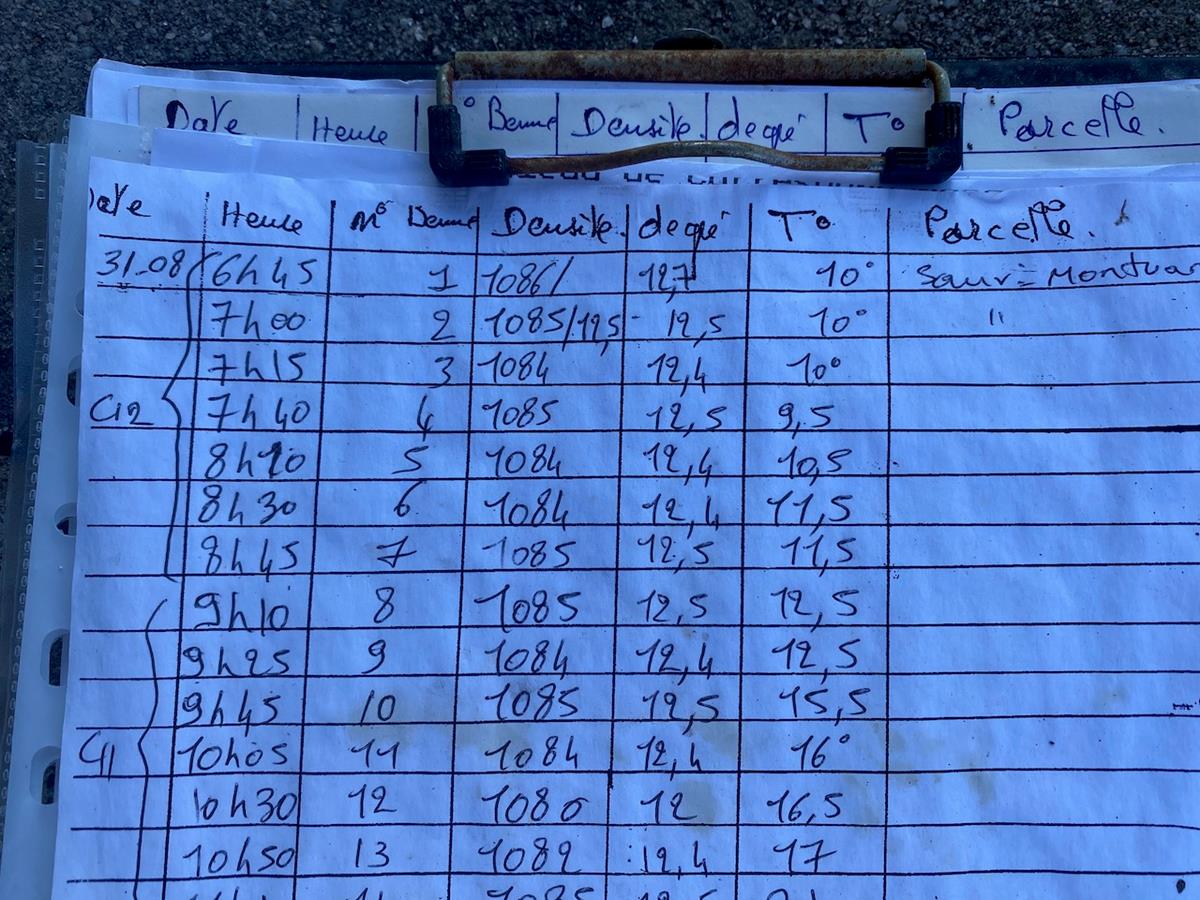
Nelly records the likely degree in alcohol and the temperature of the juice from each trailer. The Sauvignon is coming in with a forecast of a respectable 12.5% alc by volume (not too much, not too little). The later we leave it, the warmer the grapes, as you can see. The earlier the better.
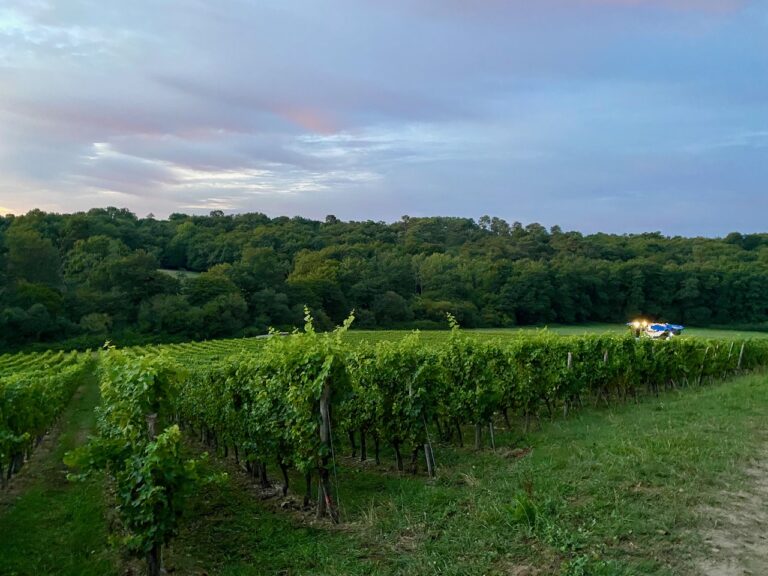
1 September, the following morning, we harvest the romantically-named ‘Sauvignon Château’, starting at 6am. We re-planted this block in 2007.
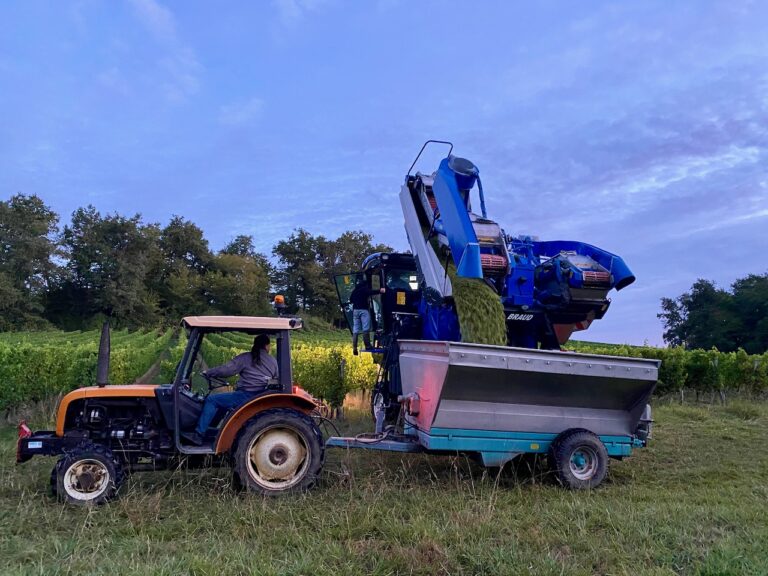
To be fair, I’d asked Guy to turn the bright lights off to take the pic, so it wouldn’t be a blurry mess. That’s Arthur, one of Guy’s drivers, getting some tuition on the job.
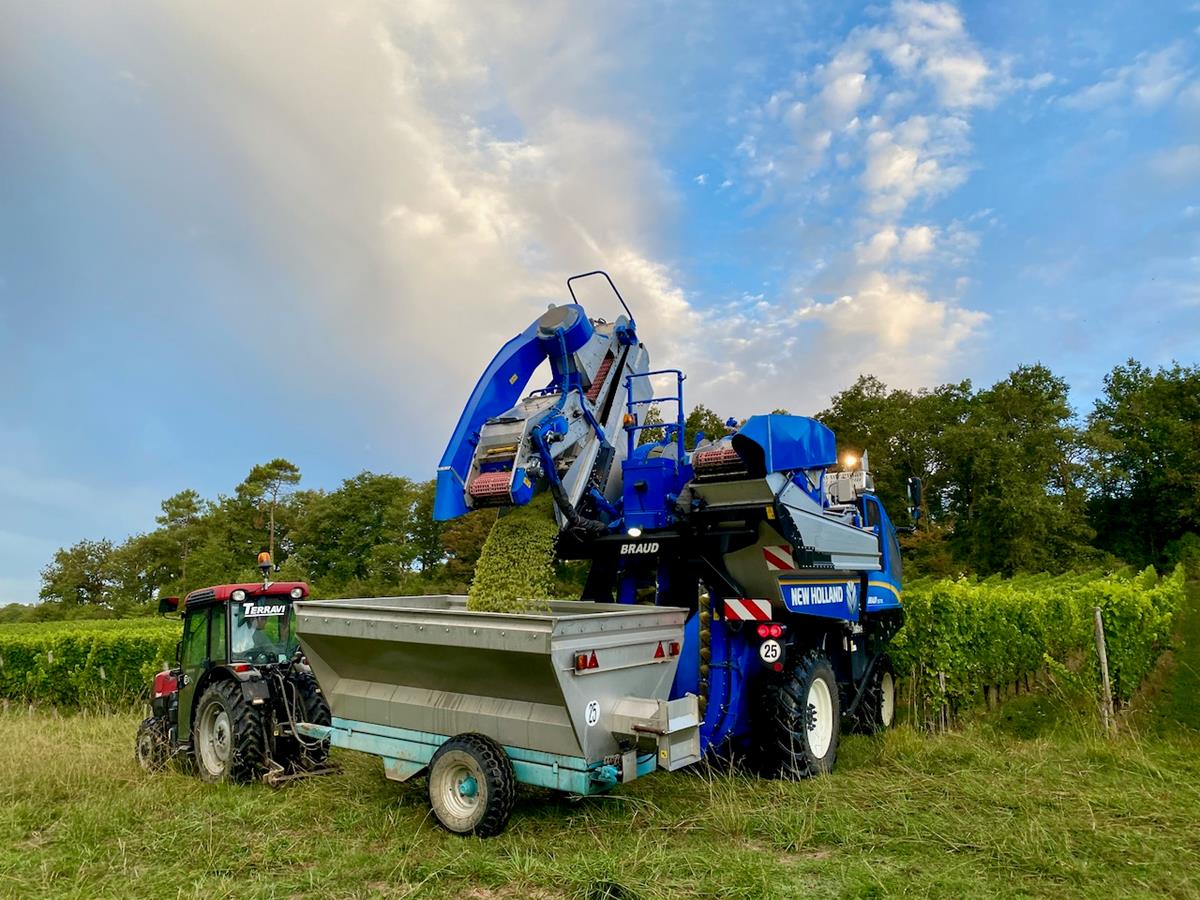
1 September is the earliest we’ve picked this block.
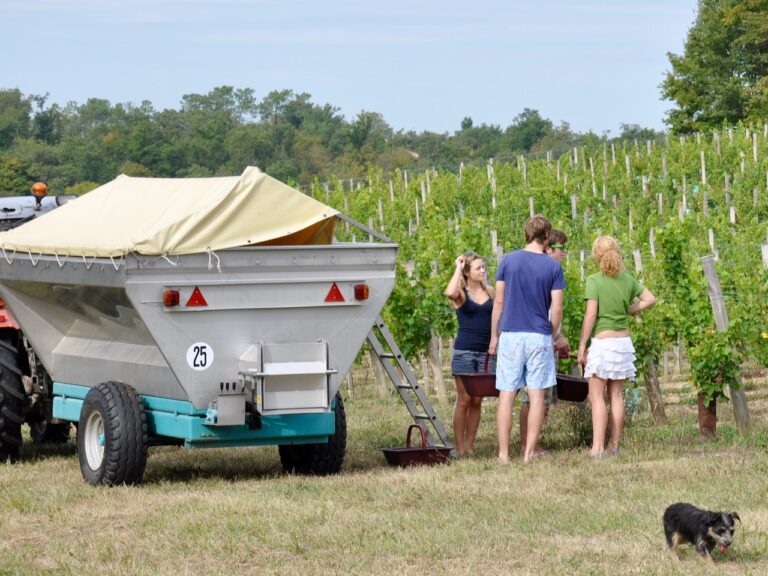
It’s a far cry from the first (manual) harvest of this block in 2009. We roped in nephew Freddie’s friends, who were here for his 21st birthday (happy birthday for today Freddie). Margaux the veteran of many a campaign, of course. Funnily enough, our 2009 white went onto become a Jancis Robinson 'wine of the week'.
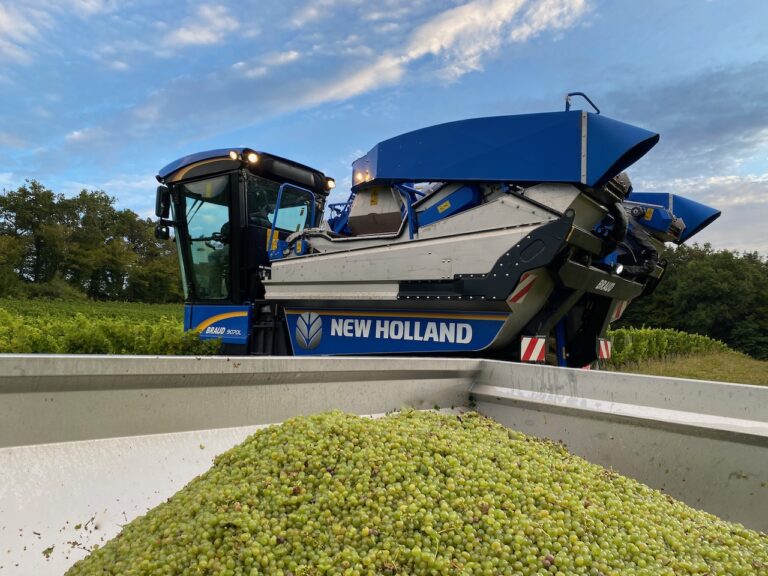
Tasty, fresh clean Sauvignon. (2020, not 2009.)
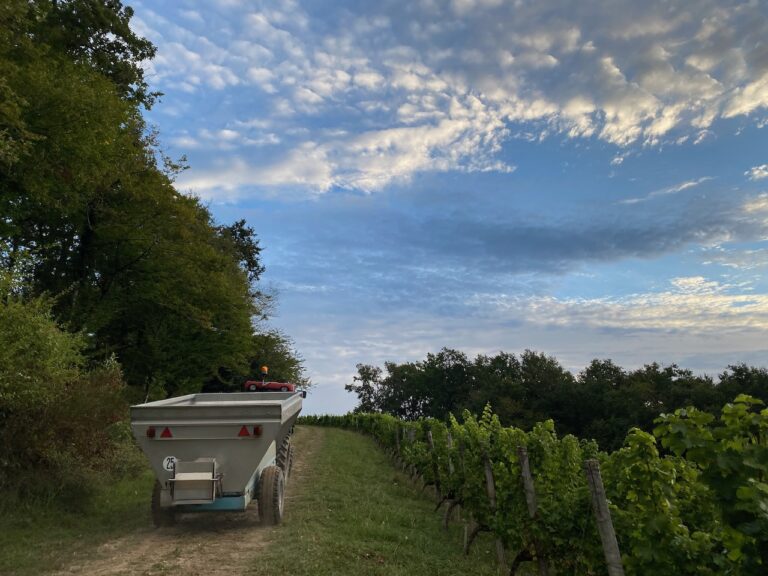
Two minutes by tractor.
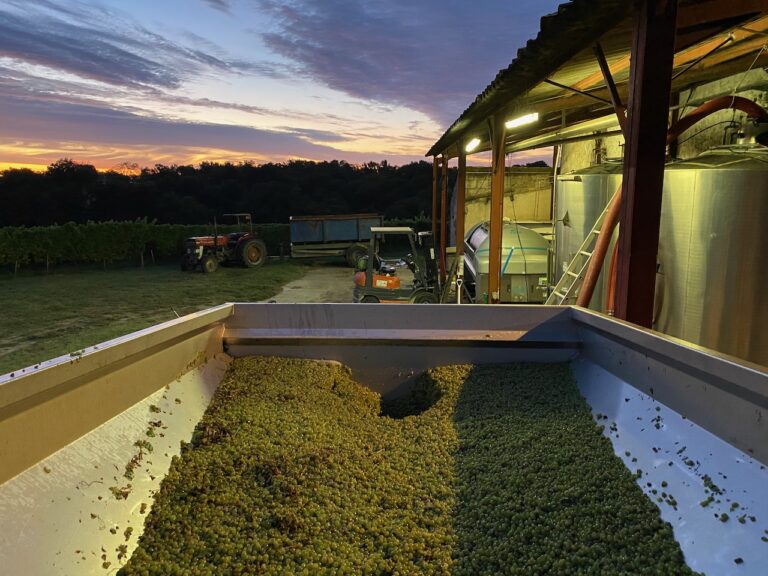
View from the trailer. The grapes are destined for those two chiller tanks on the right.
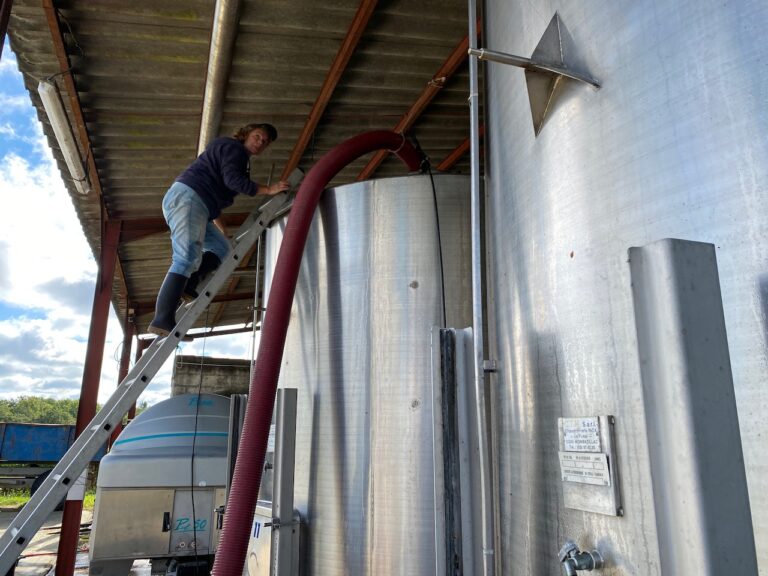
The grapes and juice go cold into these two, chilled stainless steel ‘skin contact’ tanks, and remain there for 6-20 hours. We like to extract some of the flavour and goodies from the skins, but not too much, before the juice is run off and all the gubbins pressed in the big pneumatic press, at the far end.
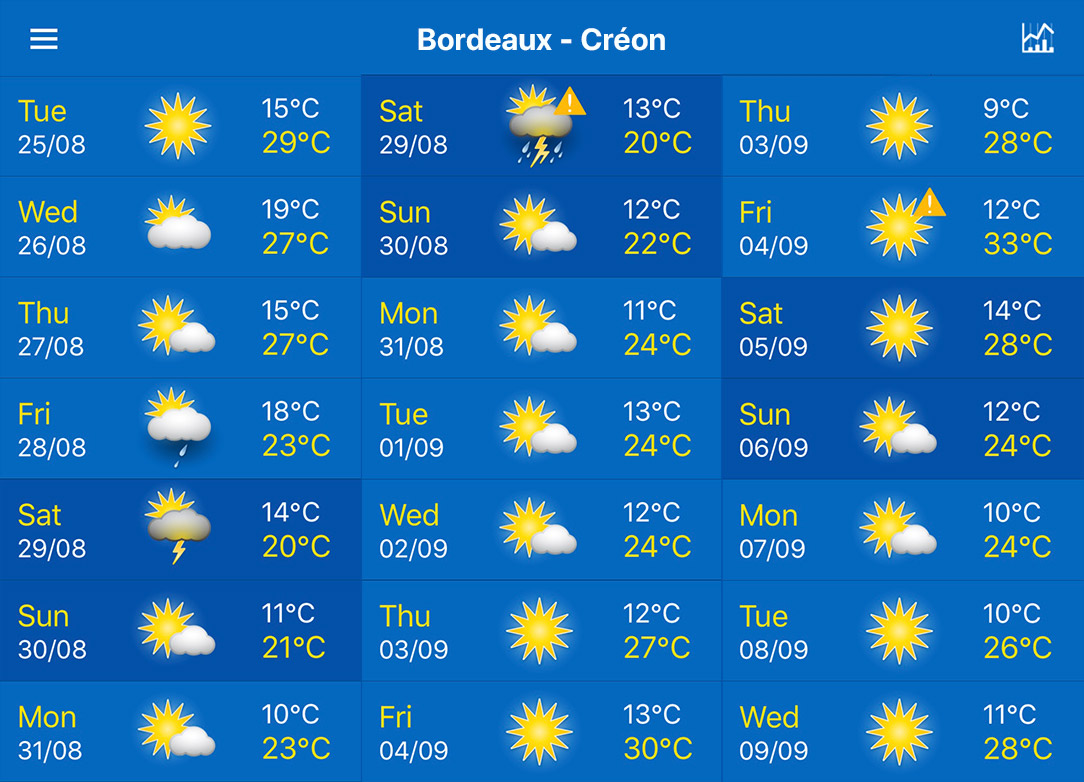
Keeping an eye on the weather, and our bookings for the machine, is a big thing. This is a montage of the forecasts from the first day of the 2020 harvest (the 25th and 26th for the handpicking), hence the change for the same dates, but you get the picture. It warms up at the end of the first week of September. Thankfully the nights and early mornings are quite chilly.
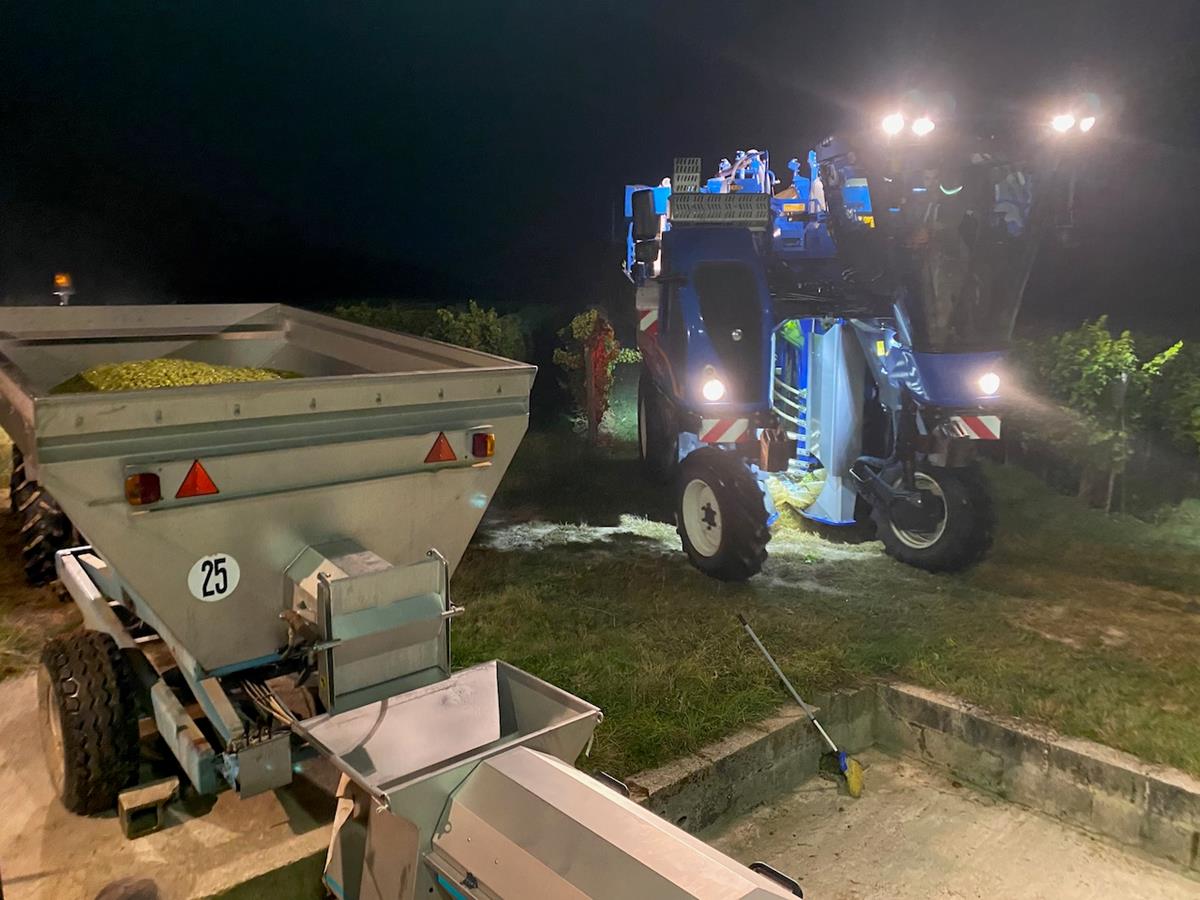
With the cold morning on the Thursday 3 September, around 9ºC, and a forecast of 33ºC on the Friday afternoon, we harvest the big block of Sauvignon behind the winery on Thursday. The pic above was just before 5am.
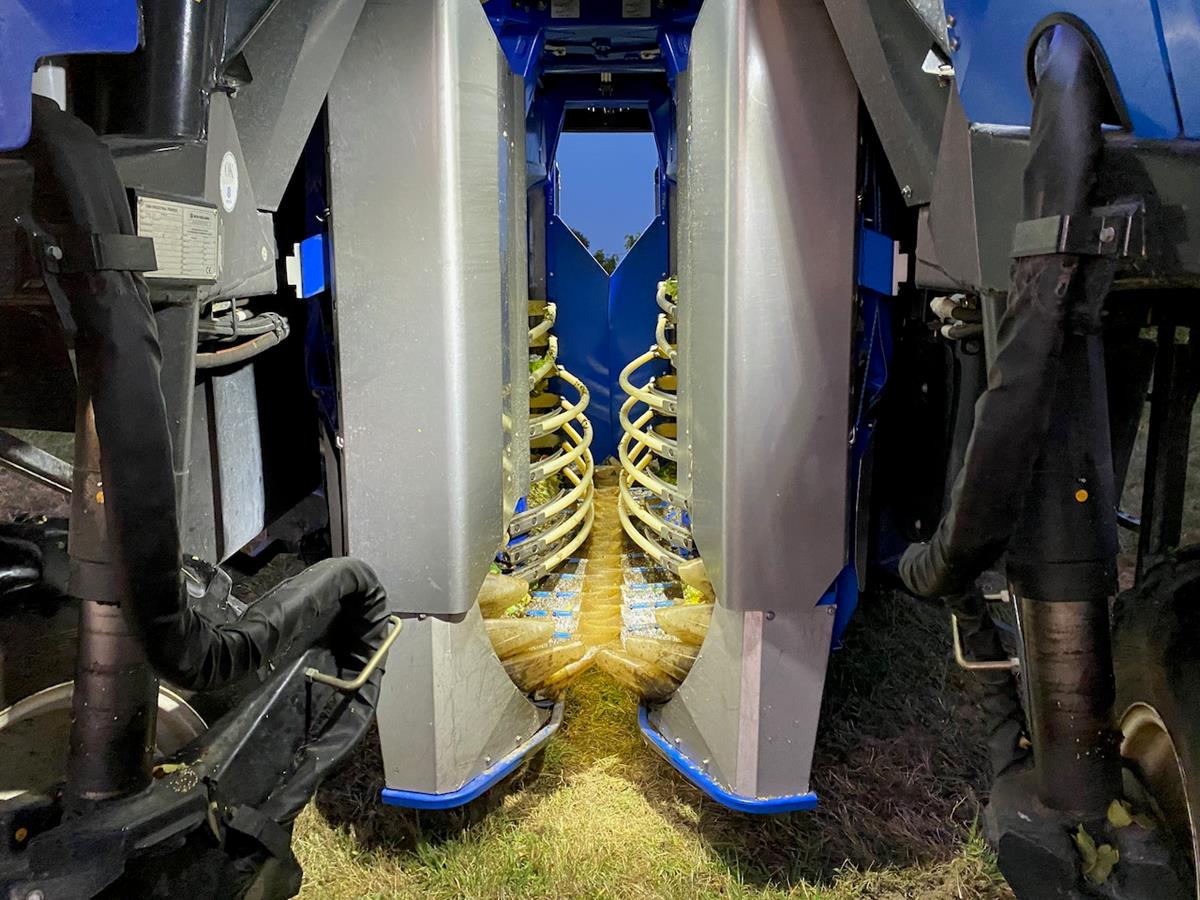
By the way, the machine works by vibrating the vines using these plastic booms, which shake. You set it to the level you want. Not too much. The grapes fall into those cups and are taken up to the sorter.
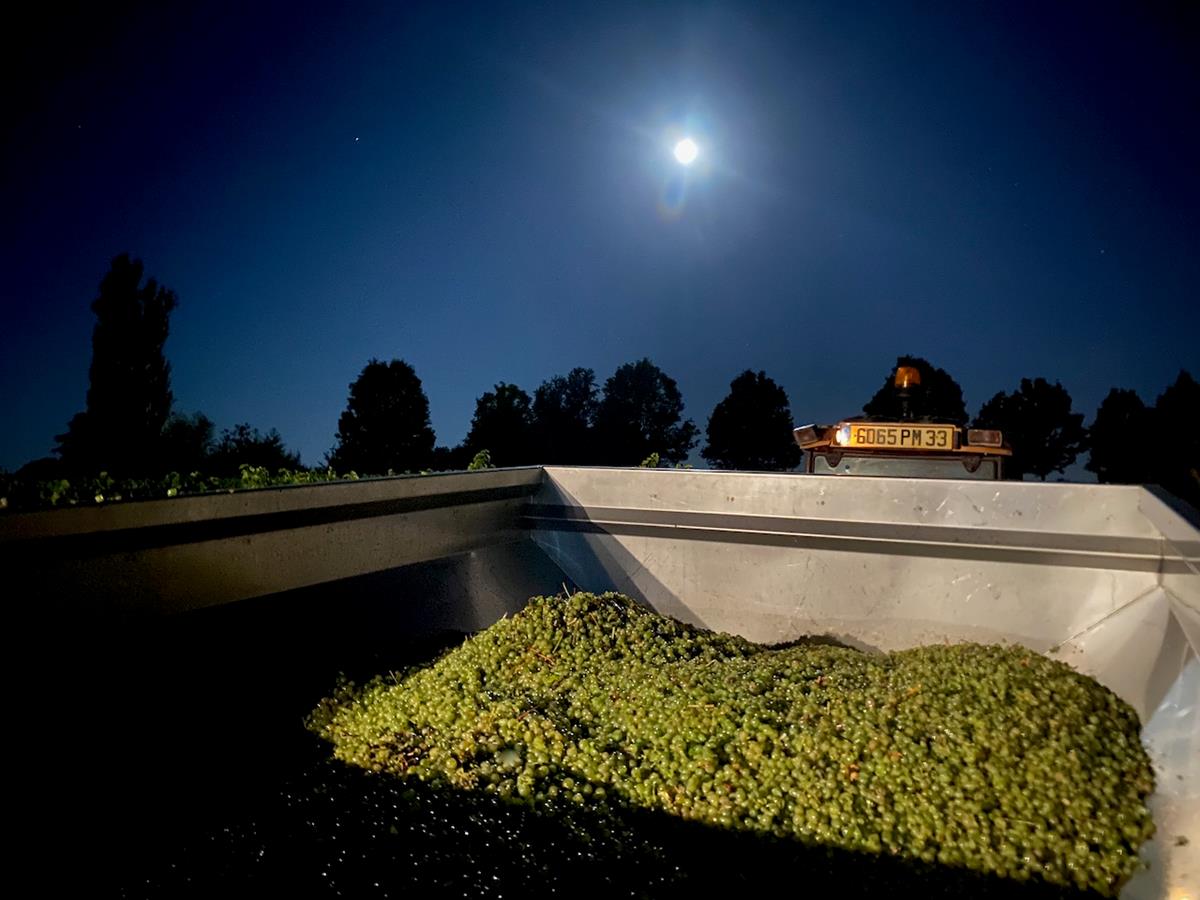
The harvest under a full moon. Those are the trees that run along our drive. I’m not sure some of our neighbours appreciated the serenity of the moment. (We are allowed to harvest after 5am.)
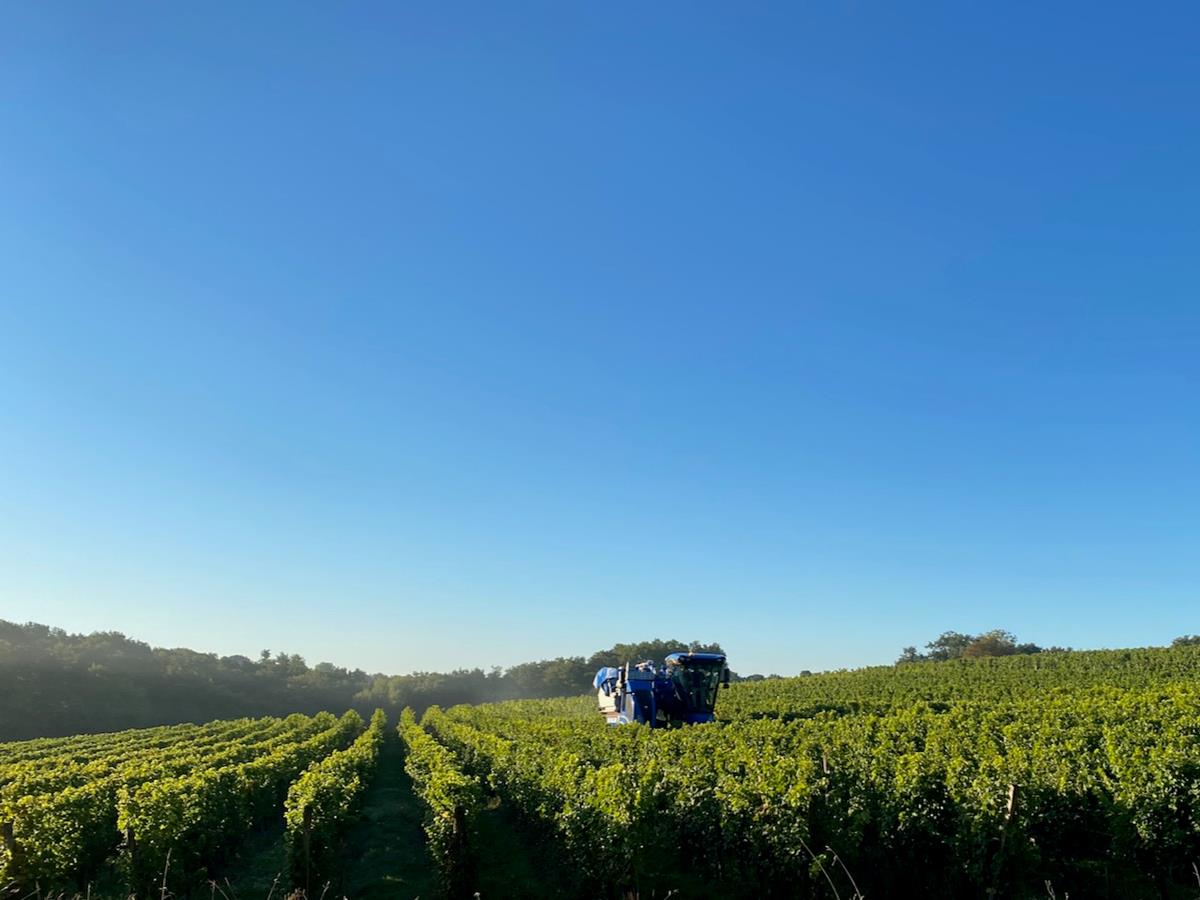
We had to start early as the sun comes up and warms the grapes, and we like bringing in cold grapes. This was 8.15am in a lovely block we planted in 2008.
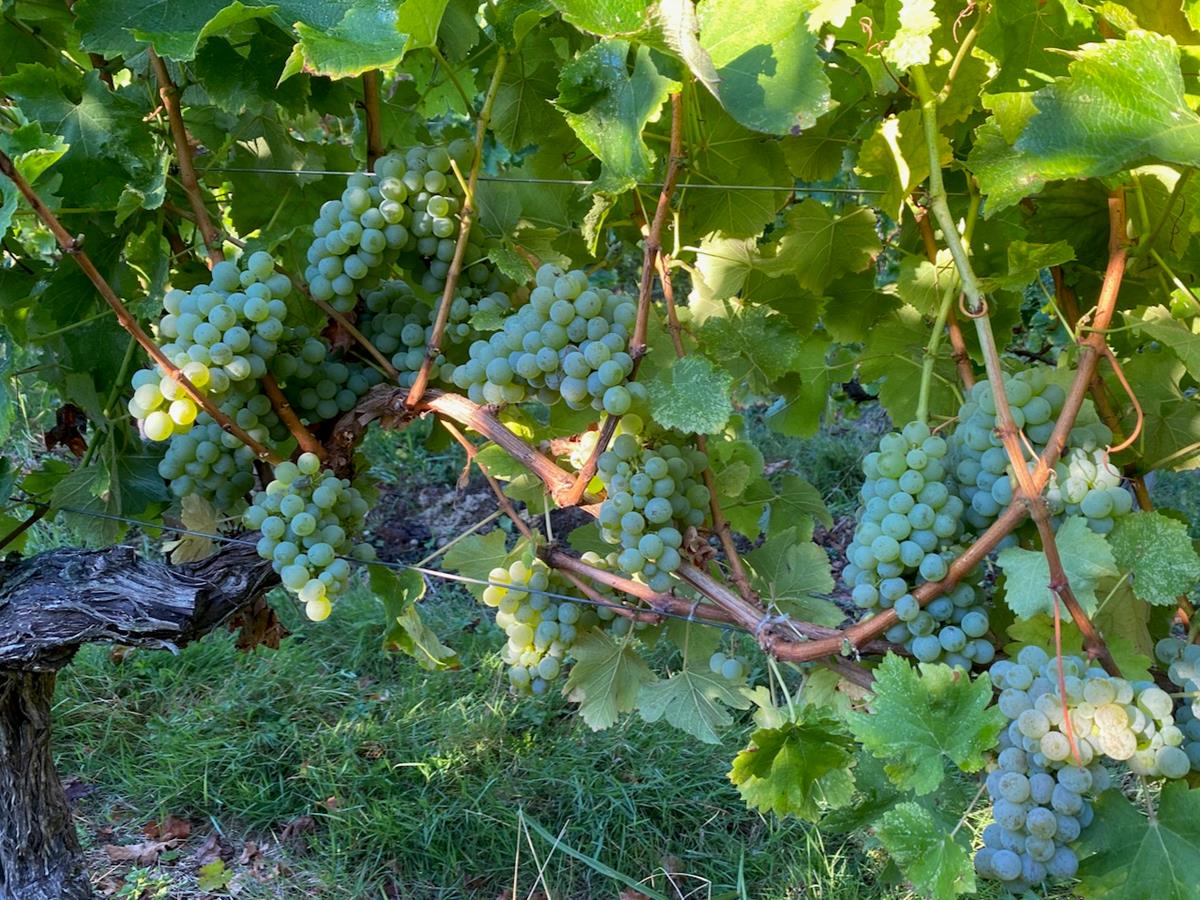
The authorities have reduced the maximum yield, just before the harvest, from 6,500 litres a hectare to 6,000 litres. (65 hl/ha to 60 hl/ha. The red lower still.) In this block there are 5,500 vines. Which of these bunches should we have dumped to the ground, if we’d had time and the people/cash available?
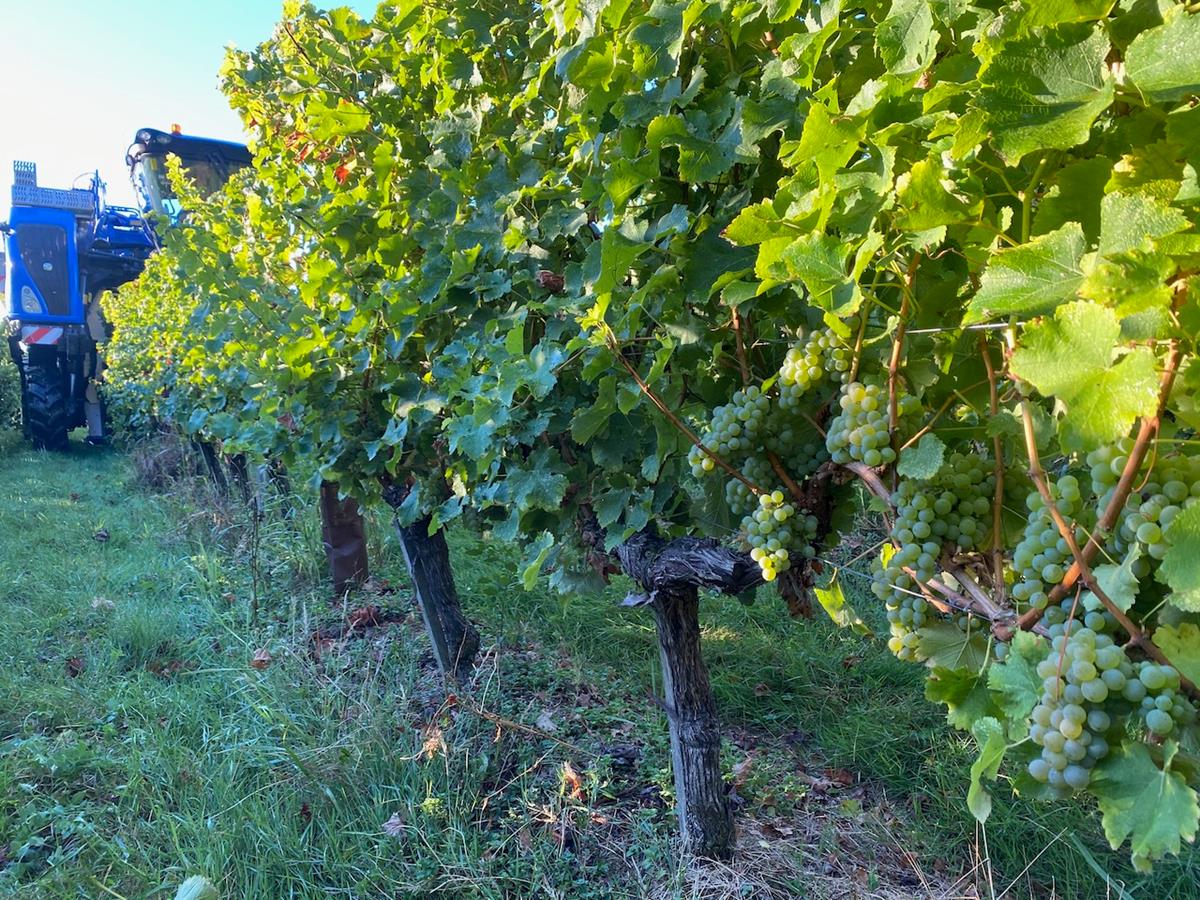
Too late. Here comes the machine.
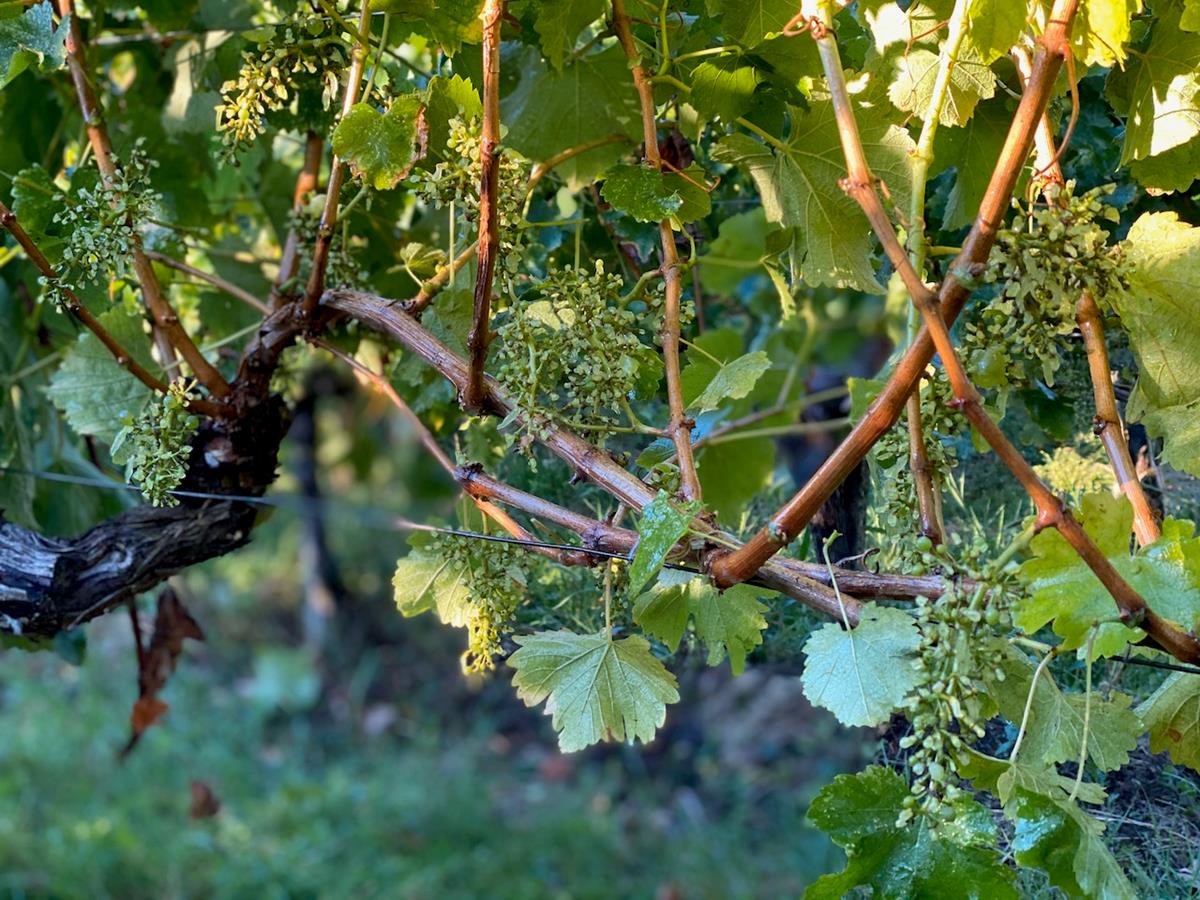
Oops. All in.
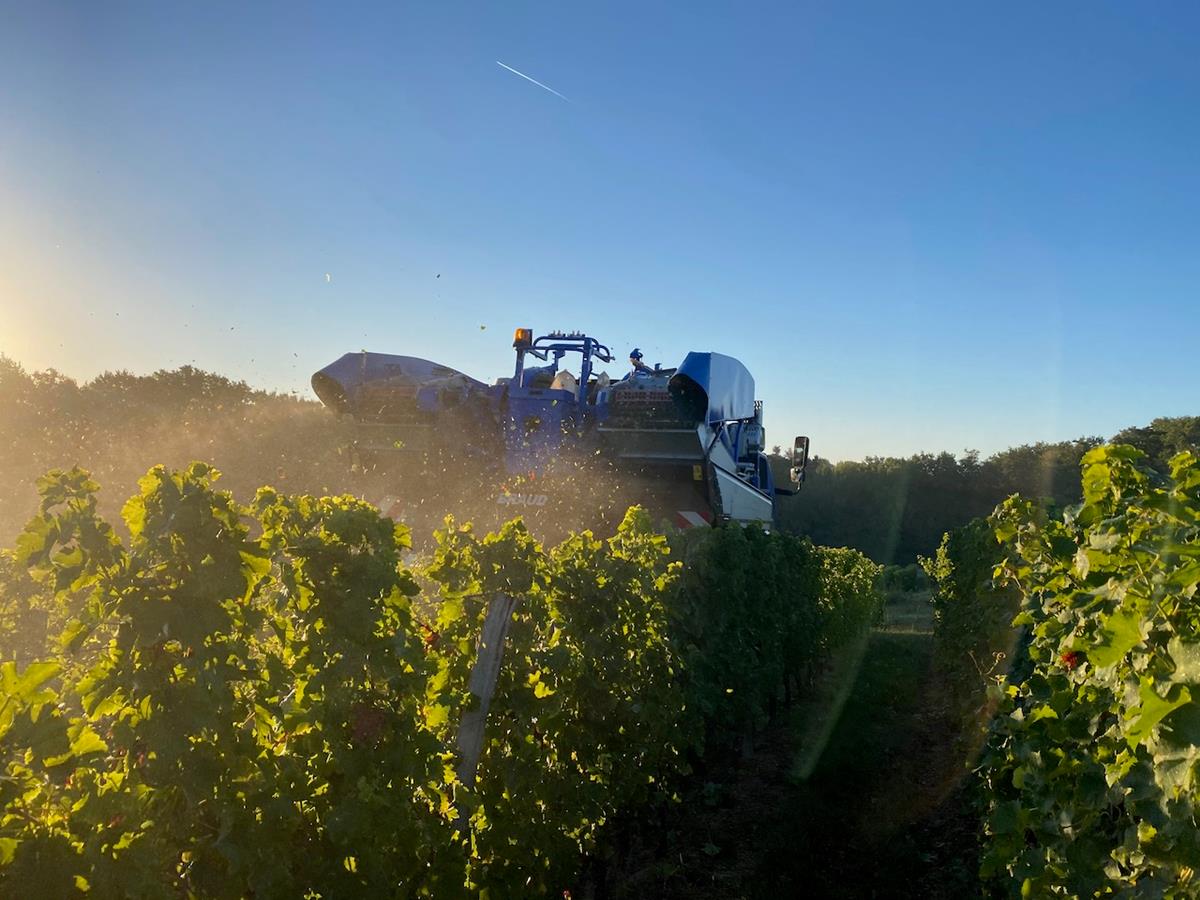
Now it’s unlikely that you’ll be standing behind a grape harvest machine in action, but if you are, avoid the powerful blowers ejecting wet leaves, stems and all sorts of harmless debris. The result is not a good look.
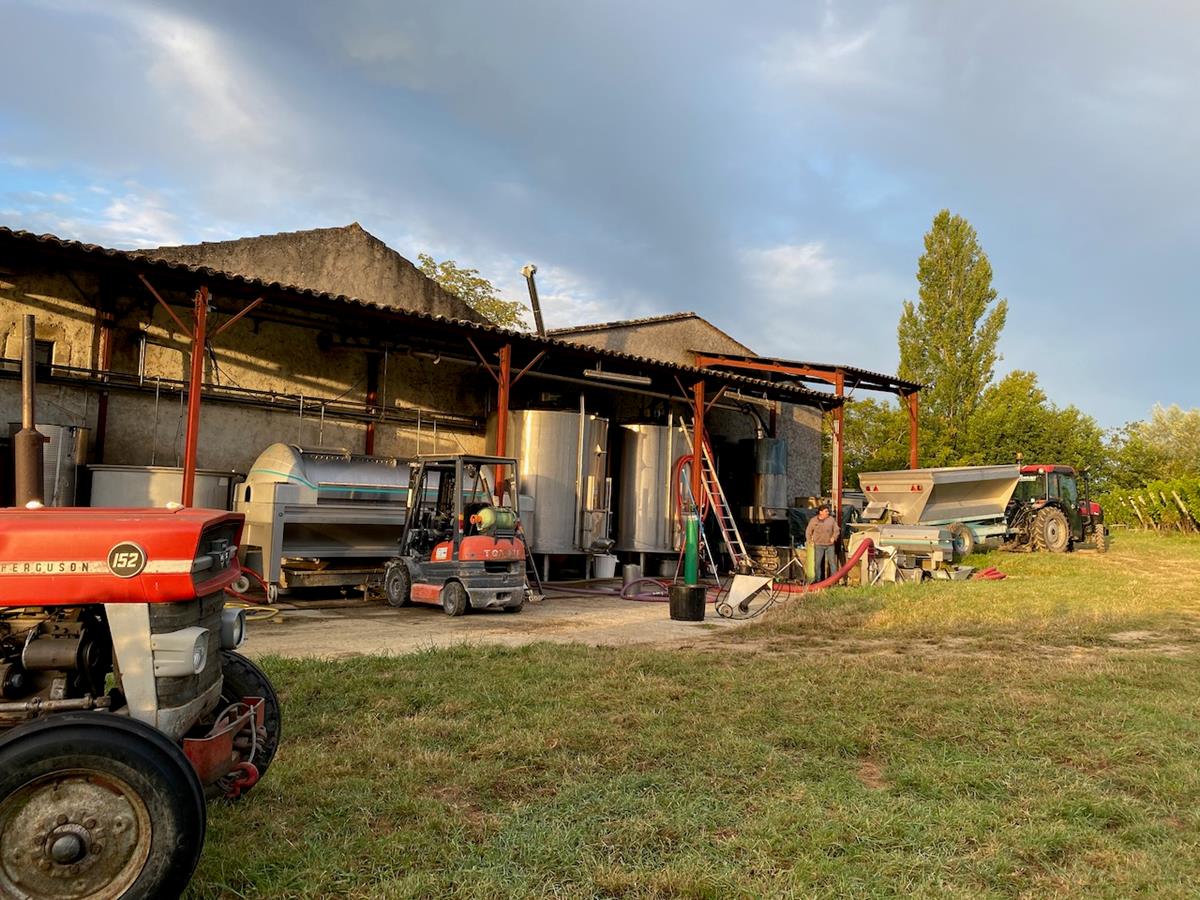
Grape artisans and just some of their kit.
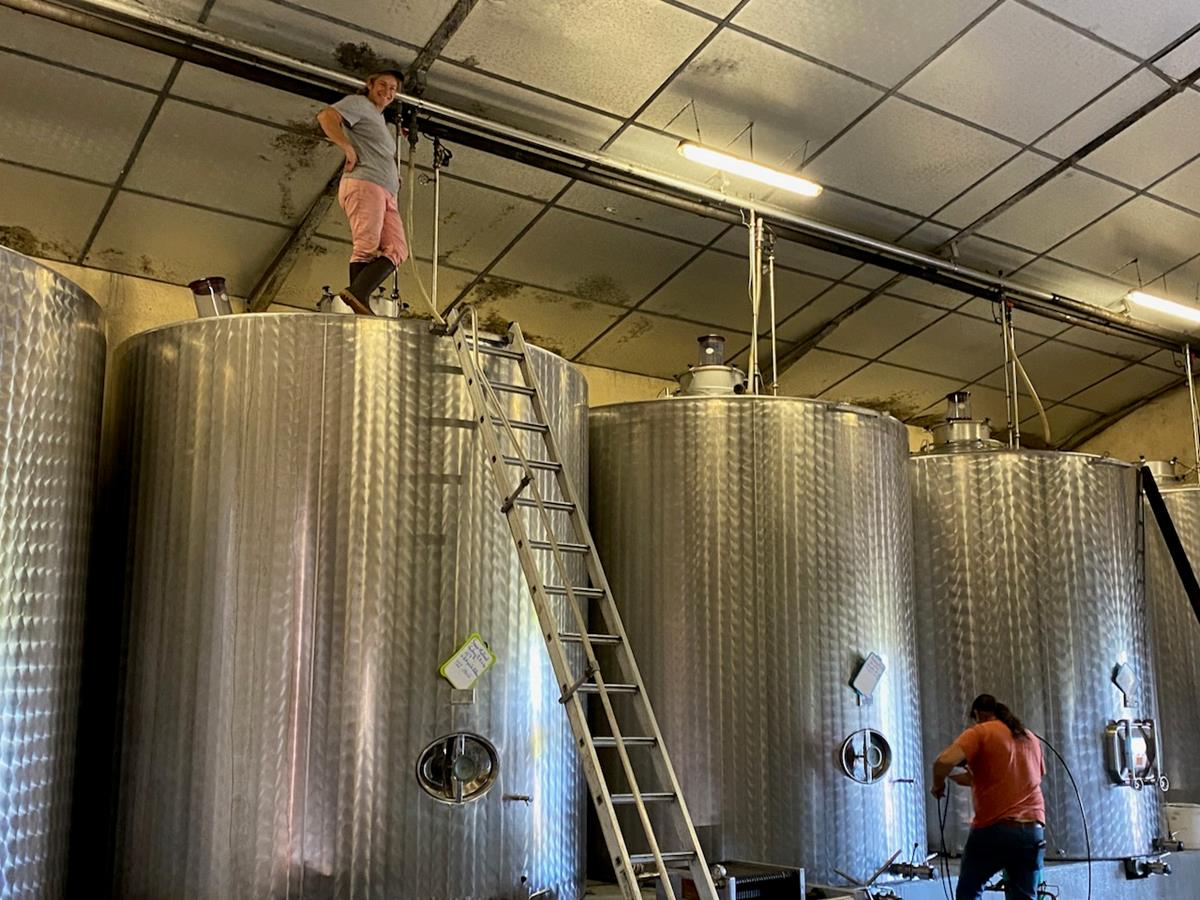
Skin contact, pressing, settling the juice, cool fermentation… The Sauvignon begins its journey from grapes, to juice, to wine. A long way to go, and we’re onto the Sémillon, and some way already through harvesting the red grapes for making rosé.
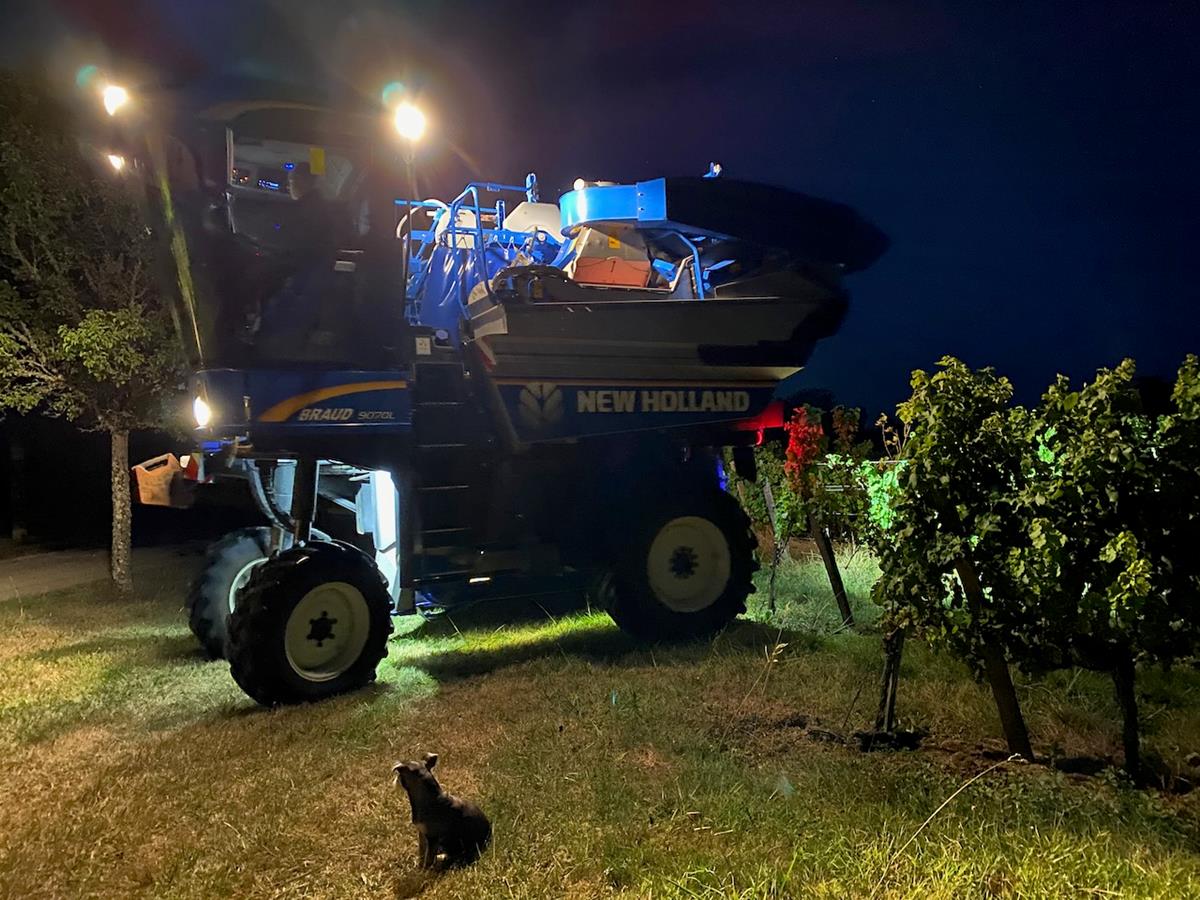
Monday 7 September, before dawn in Les Trois Hectares white. And Margaux is still too close to the machine. Onwards and upwards. See you for next week’s third thrilling encounter of the harvest kind.
There’s a photo album of the pictures here.

